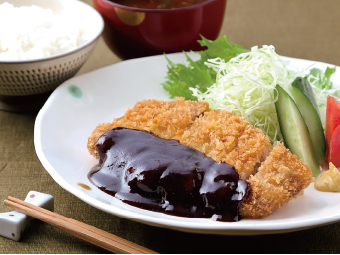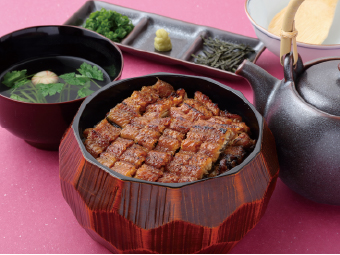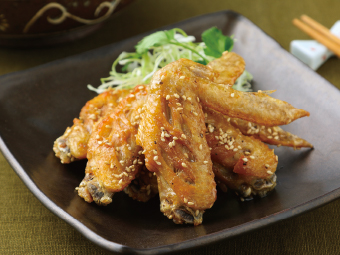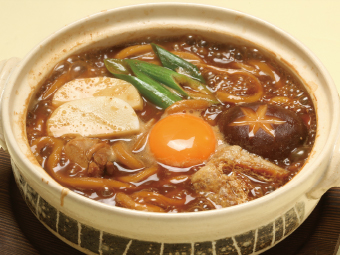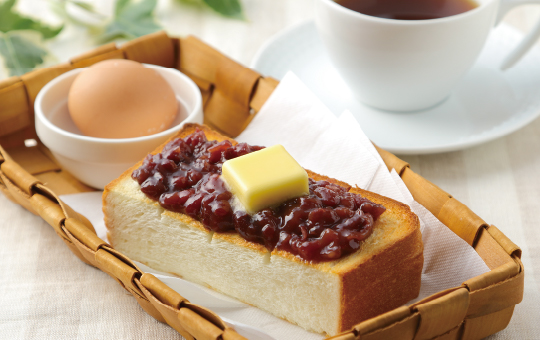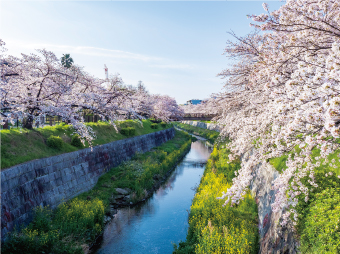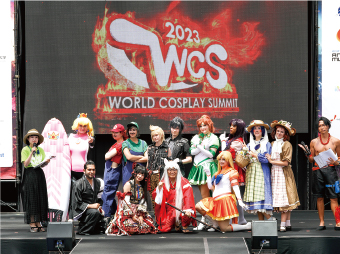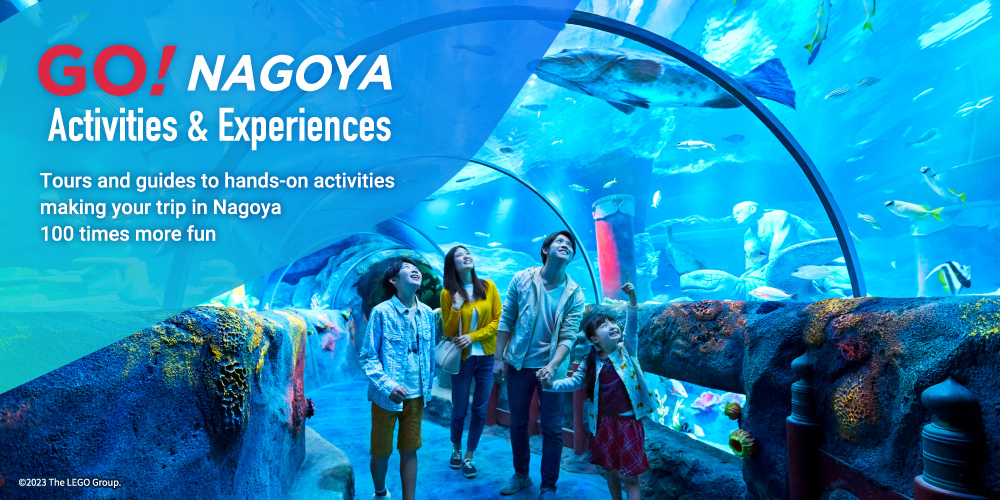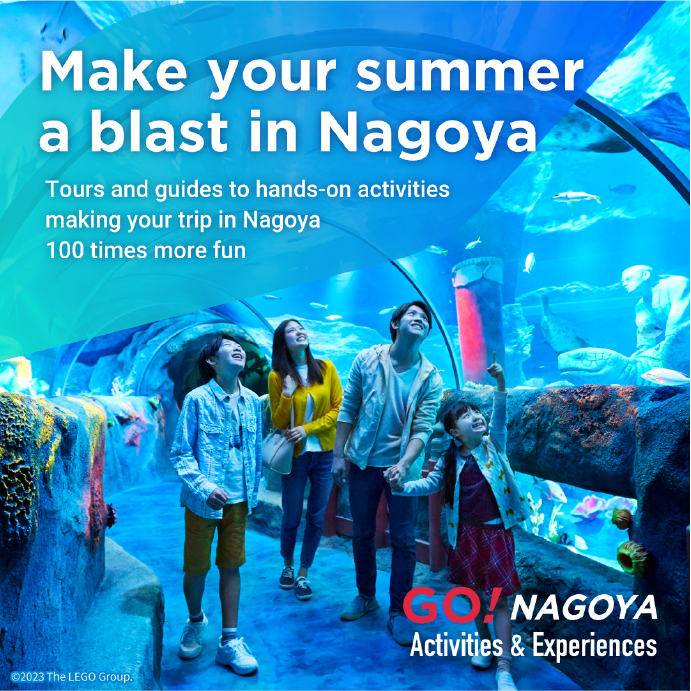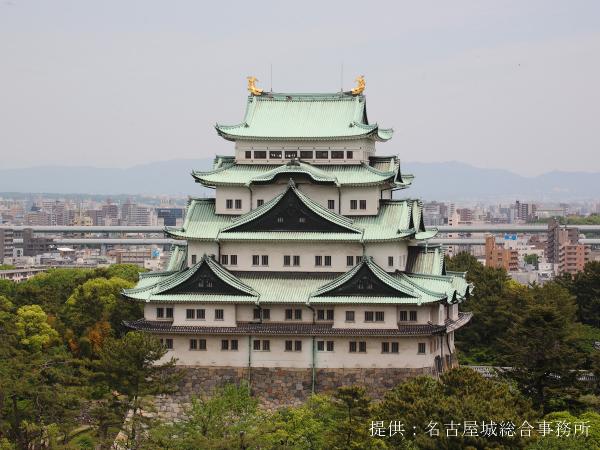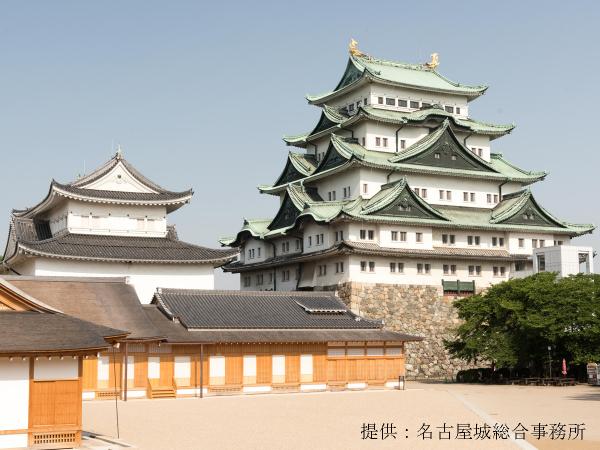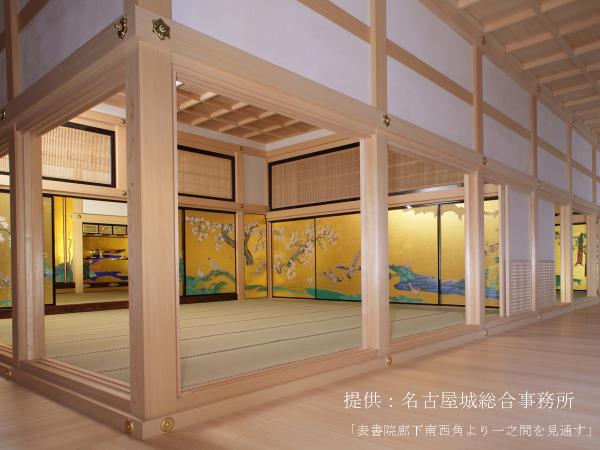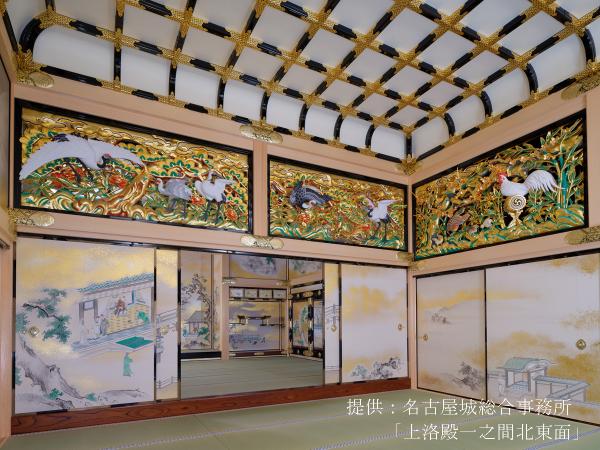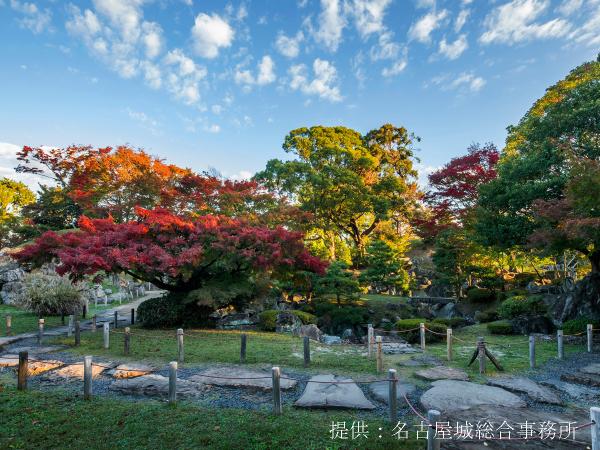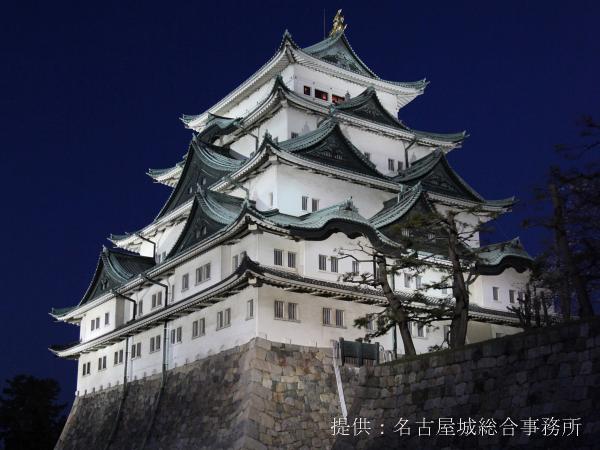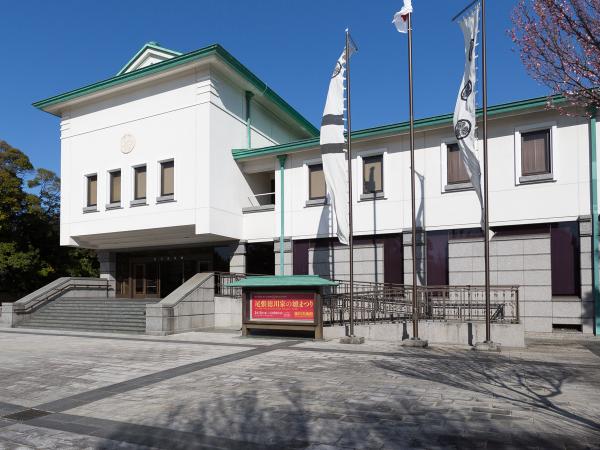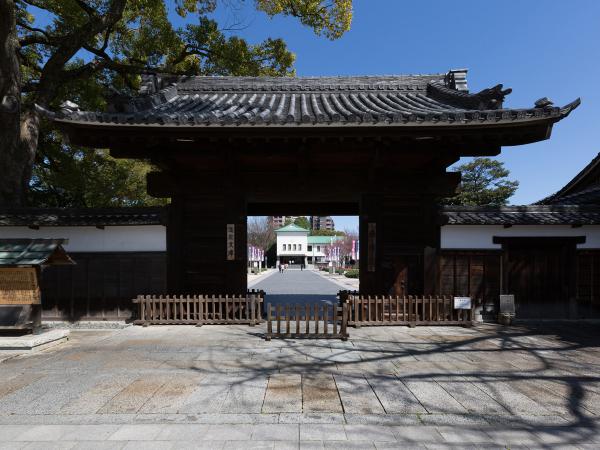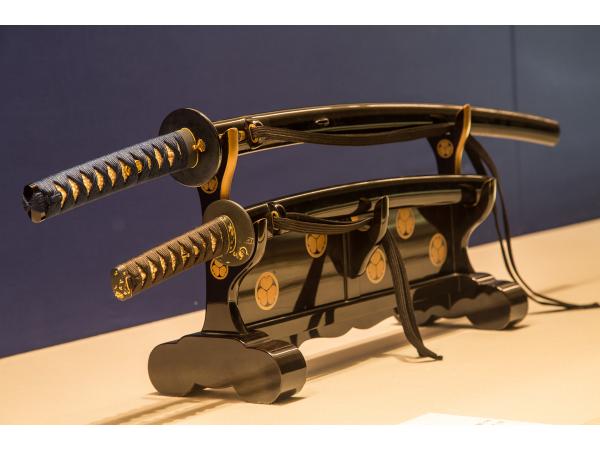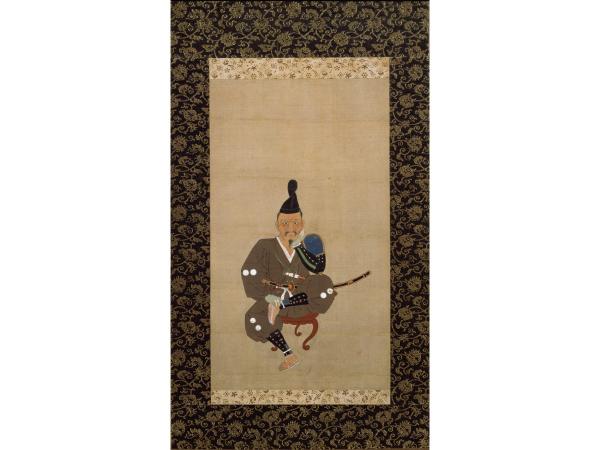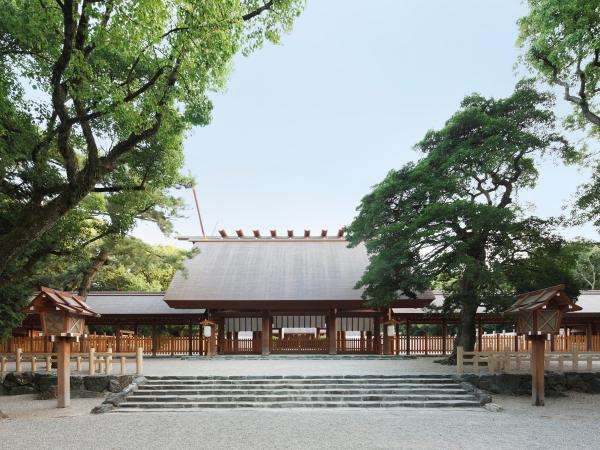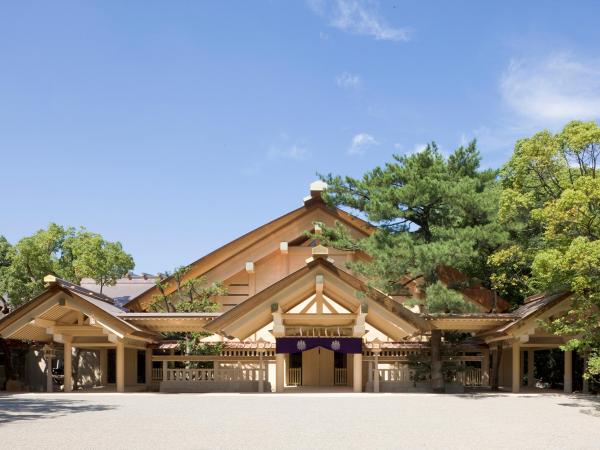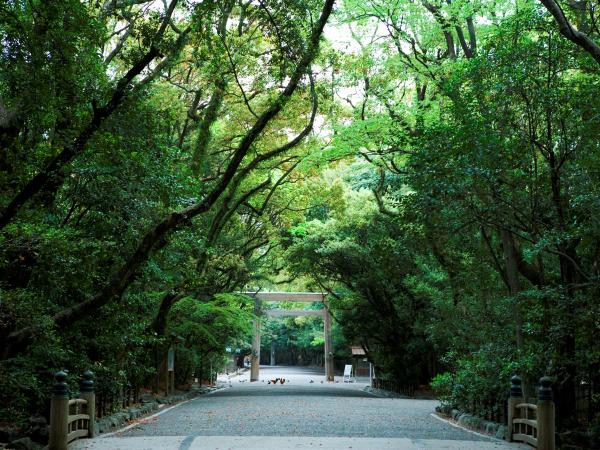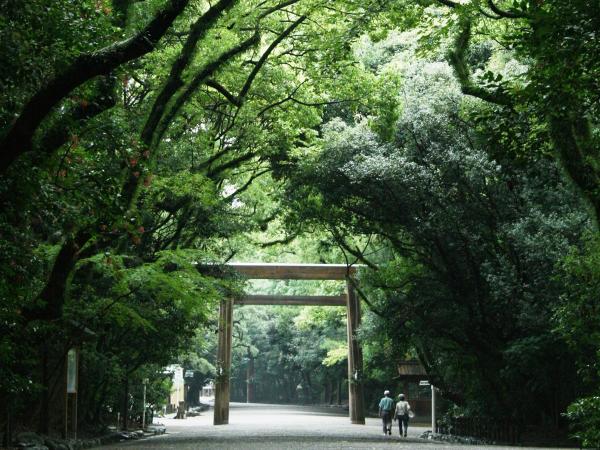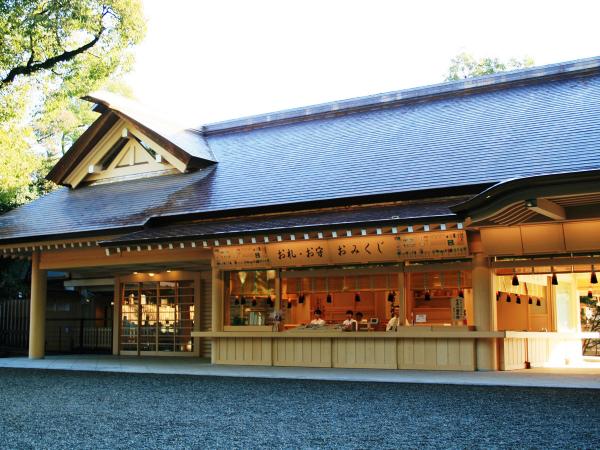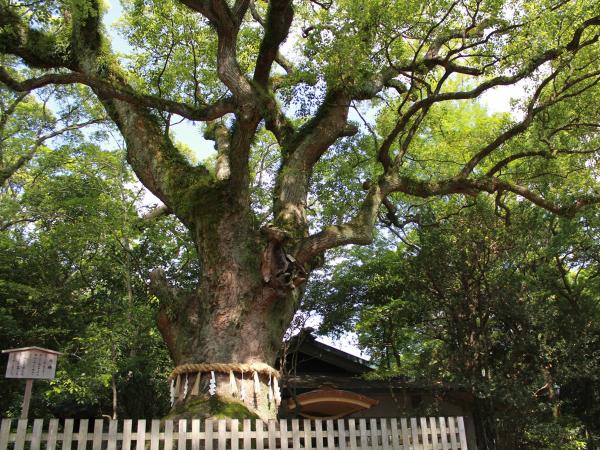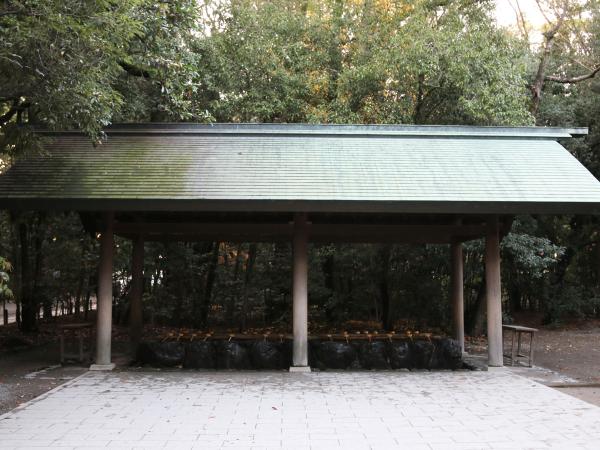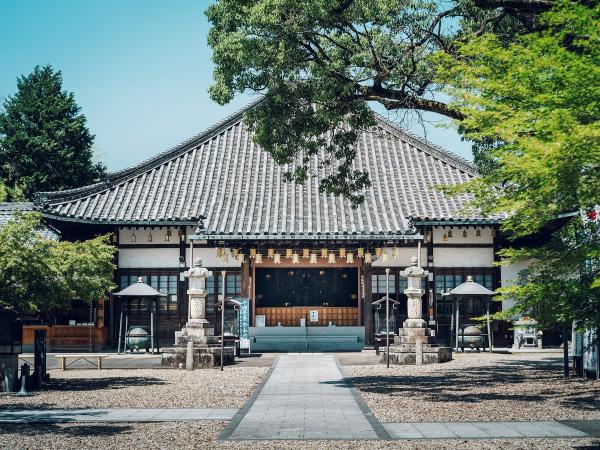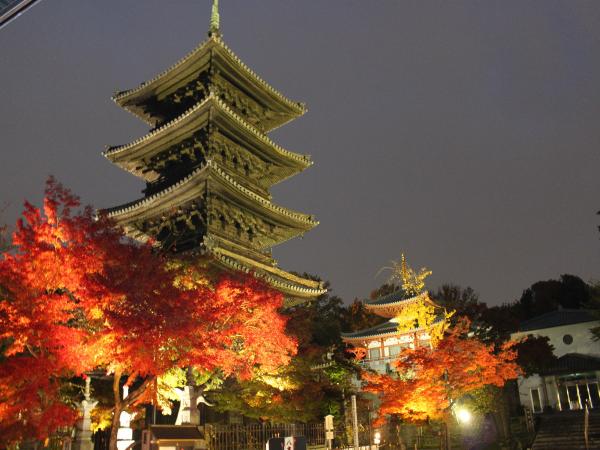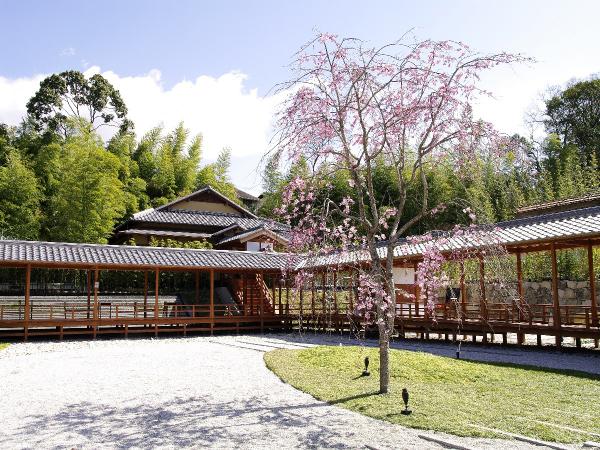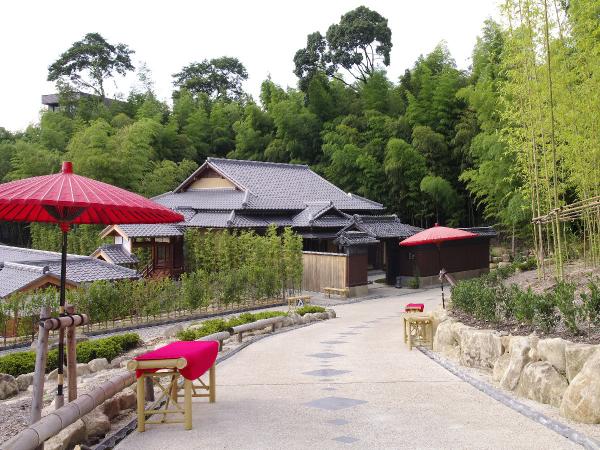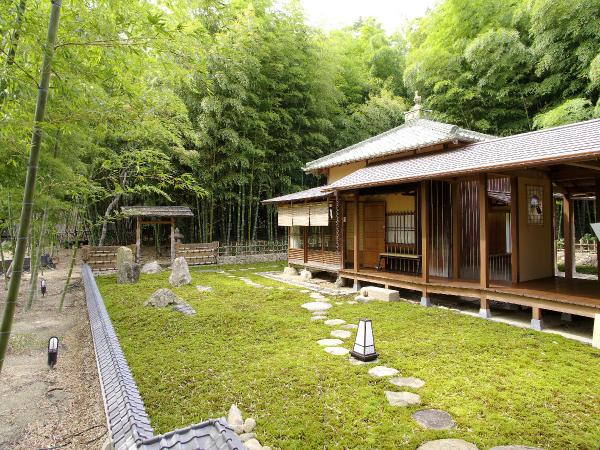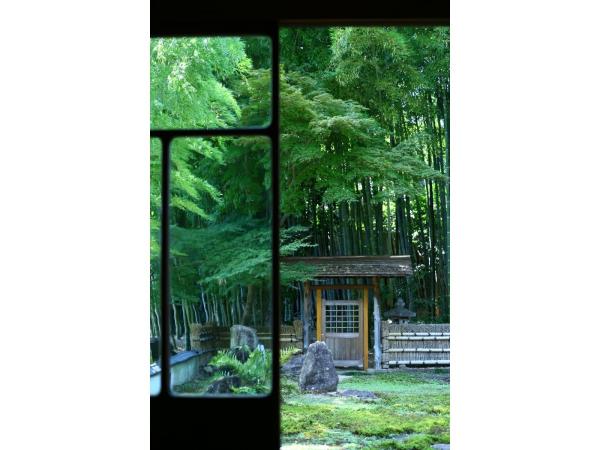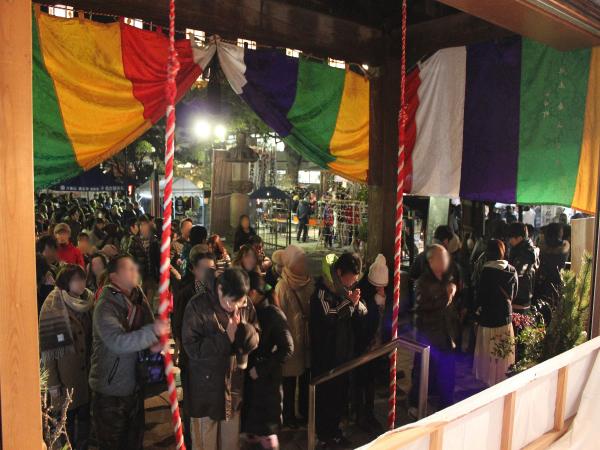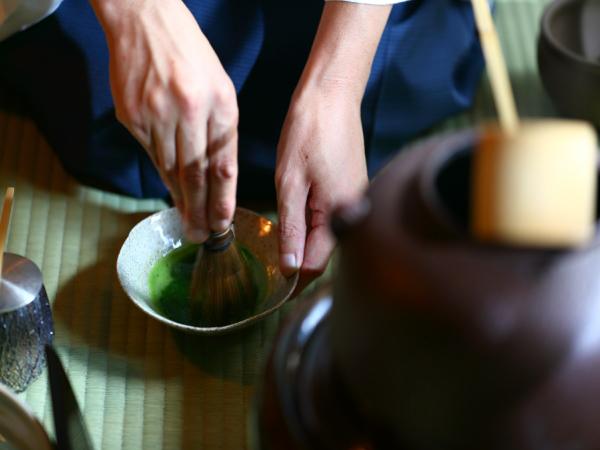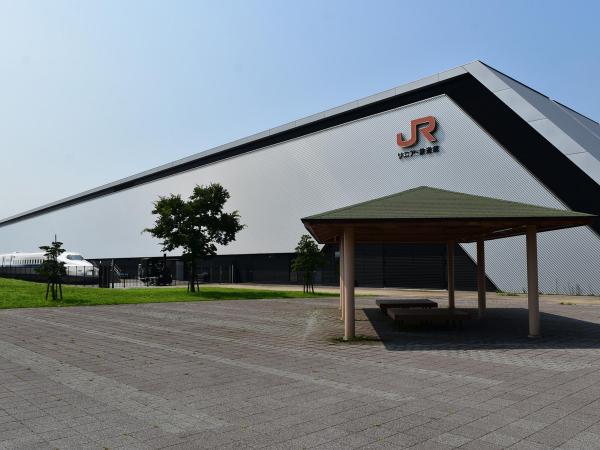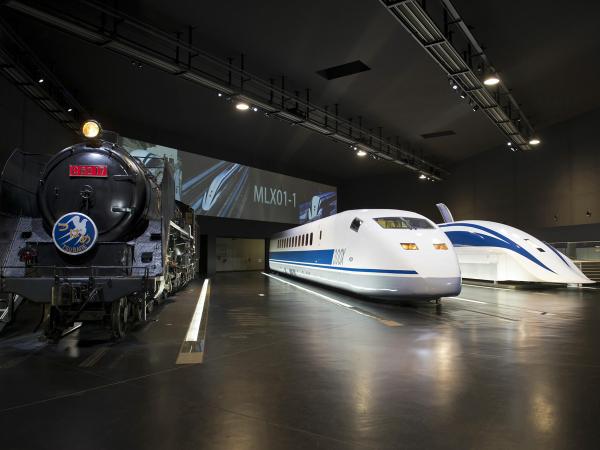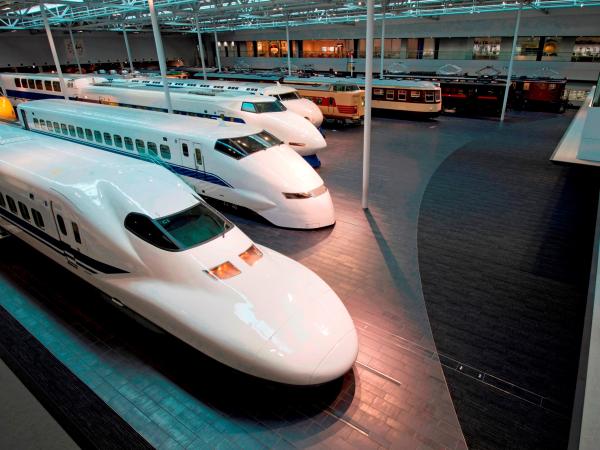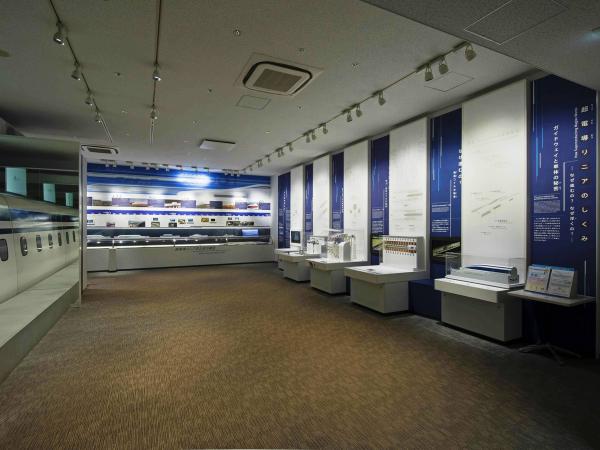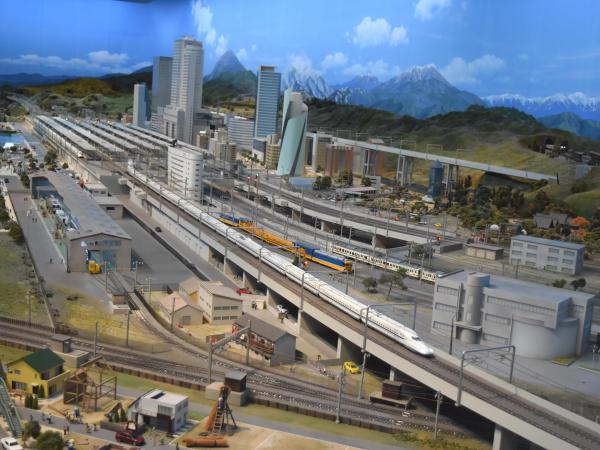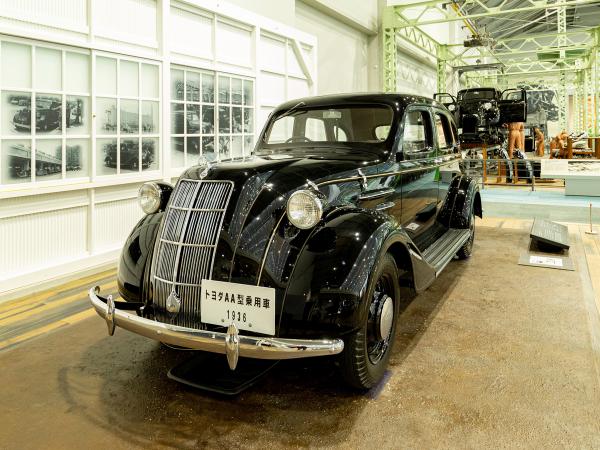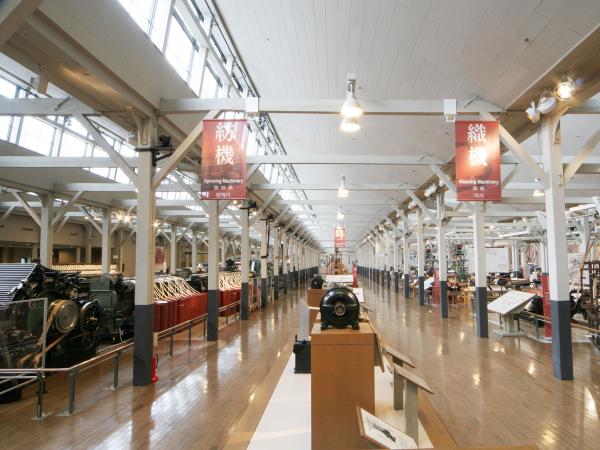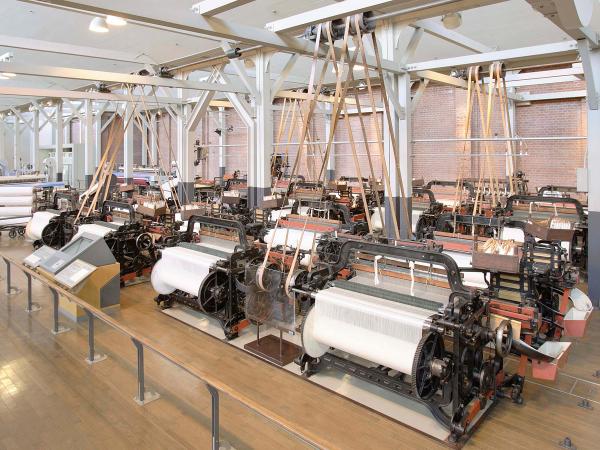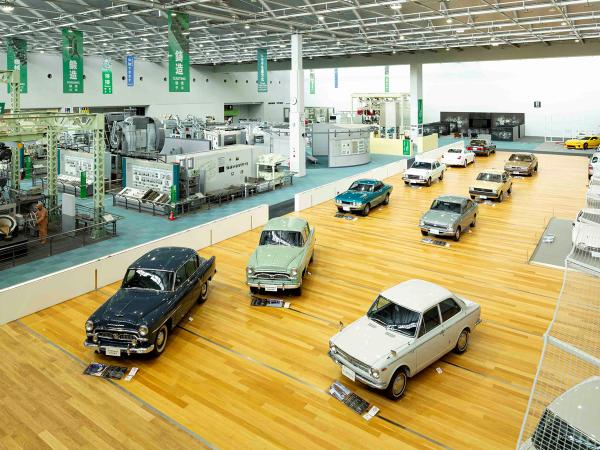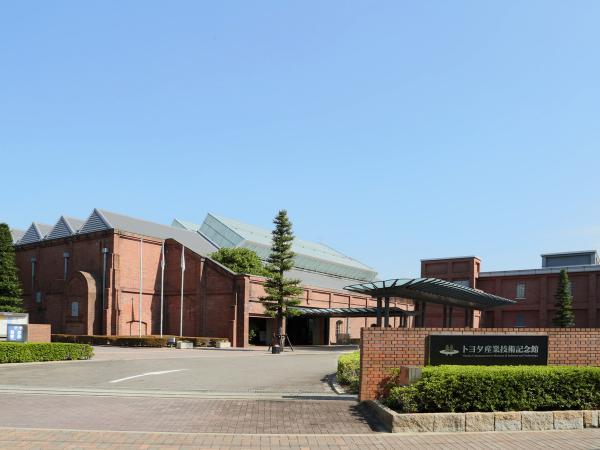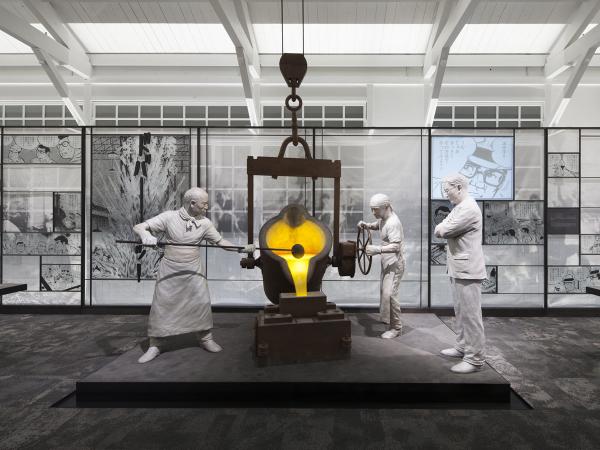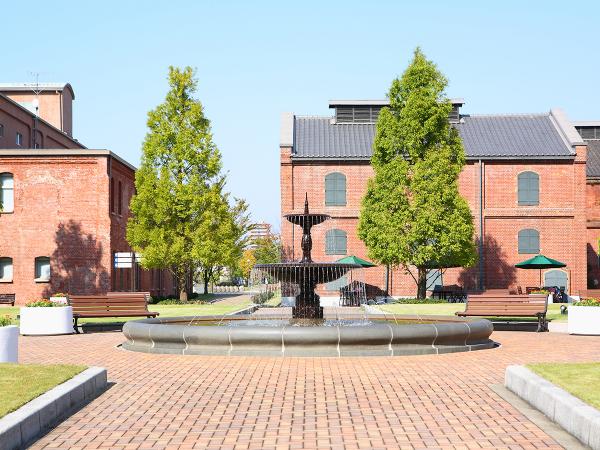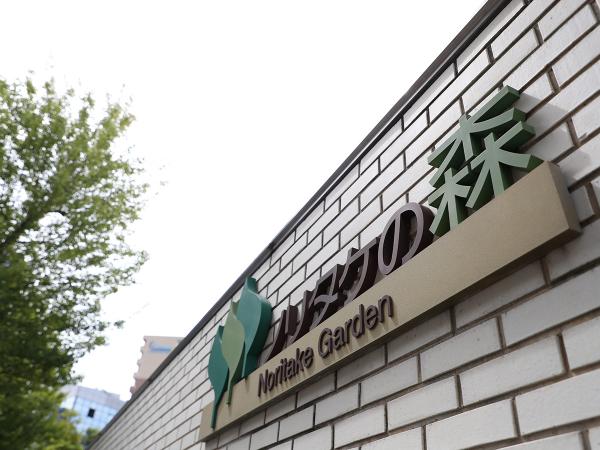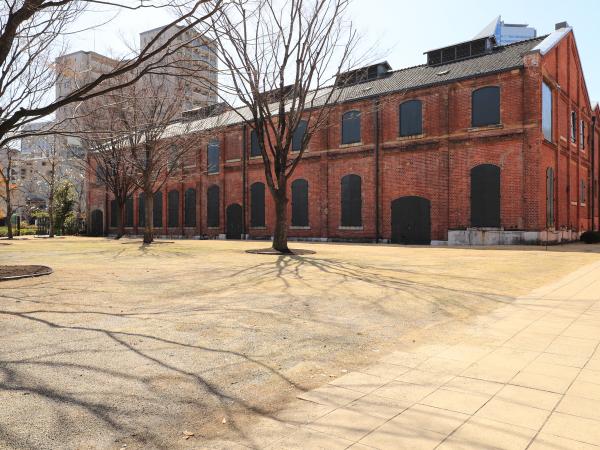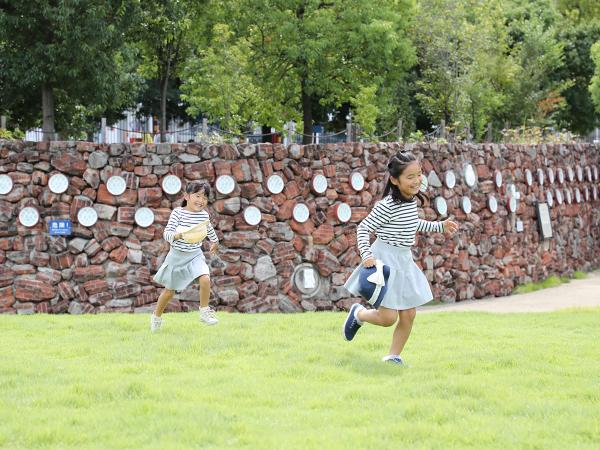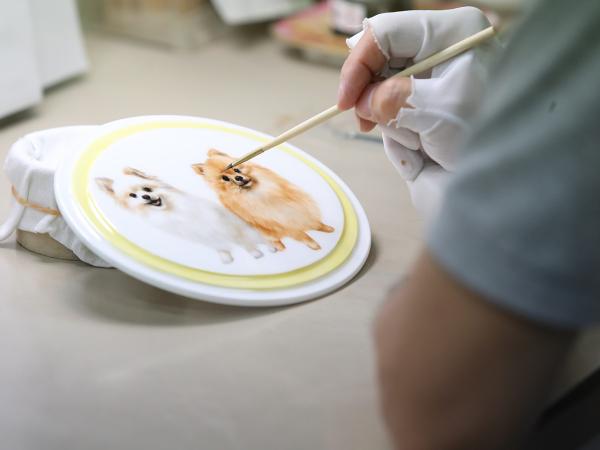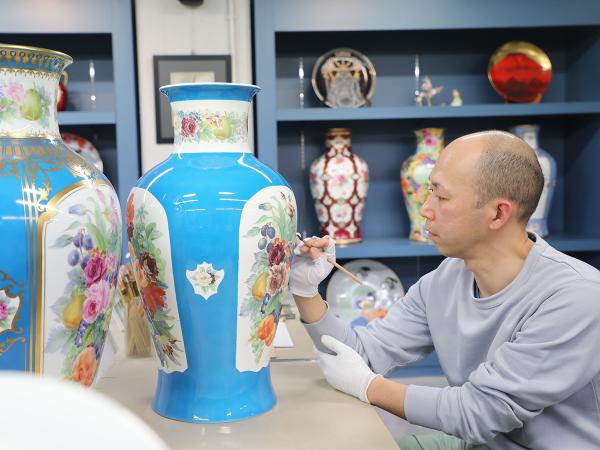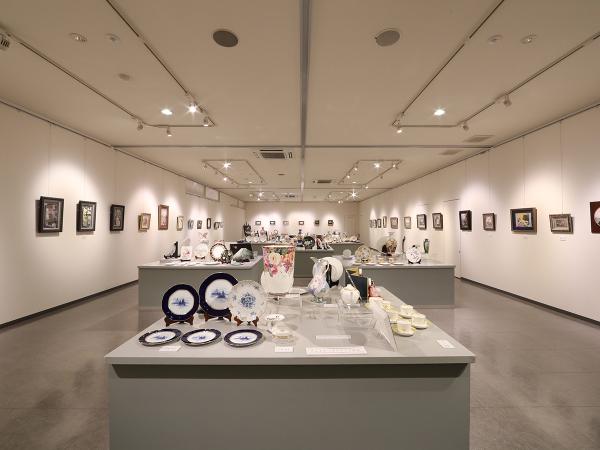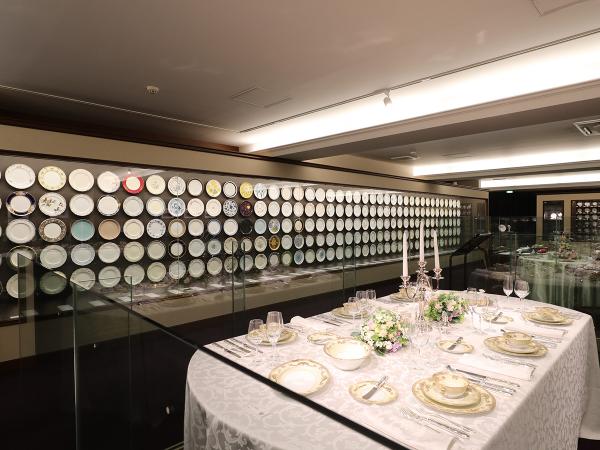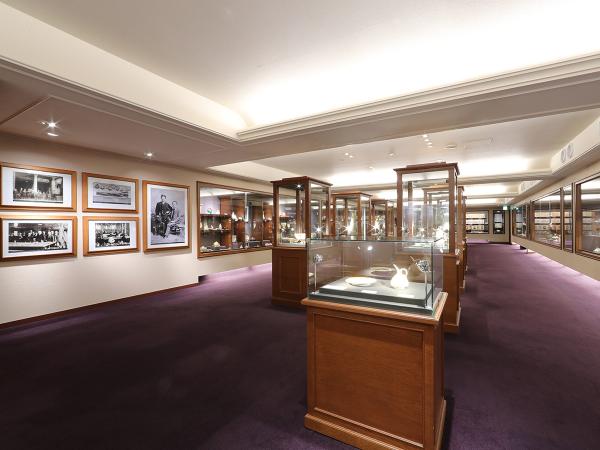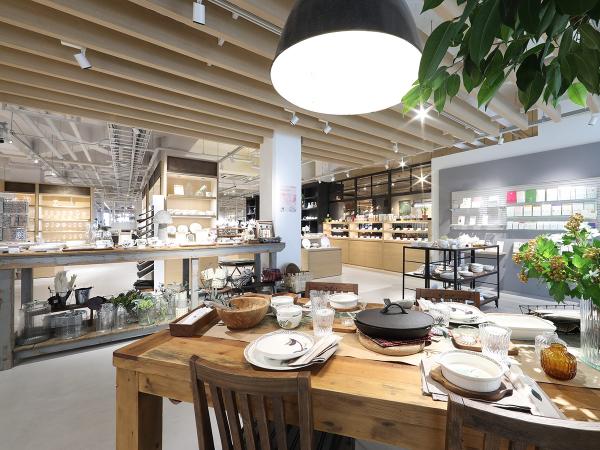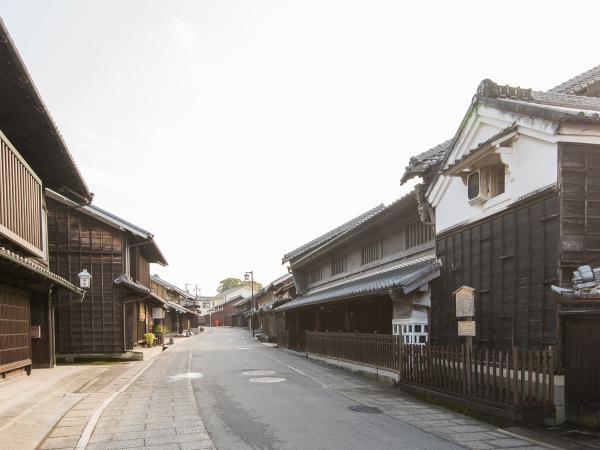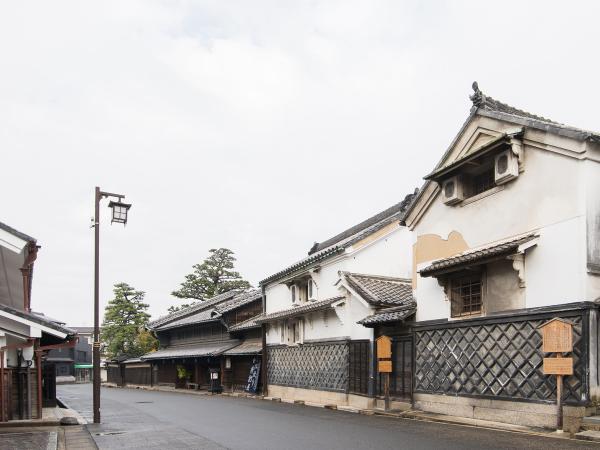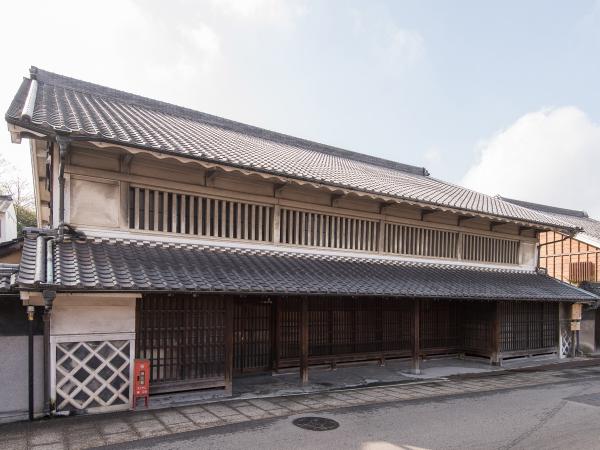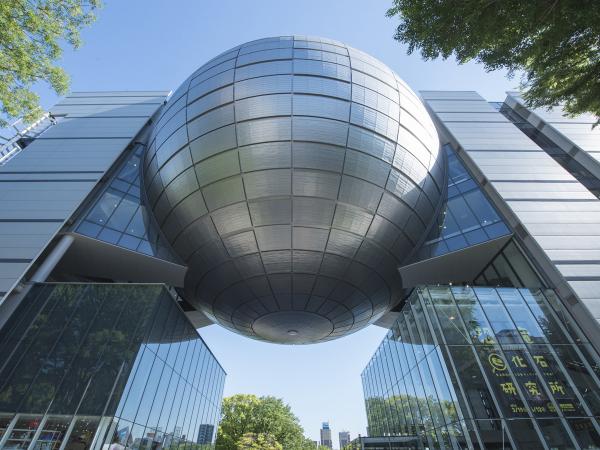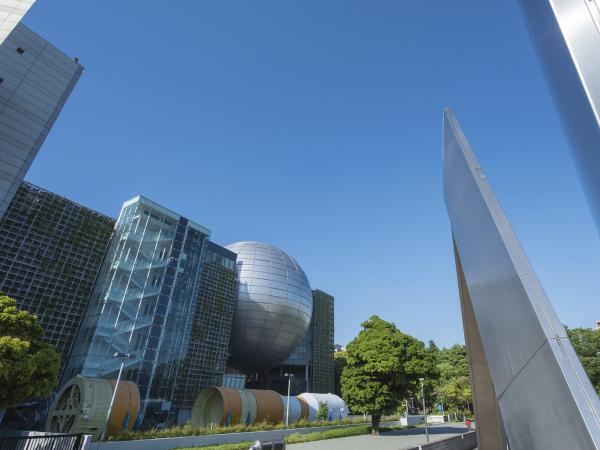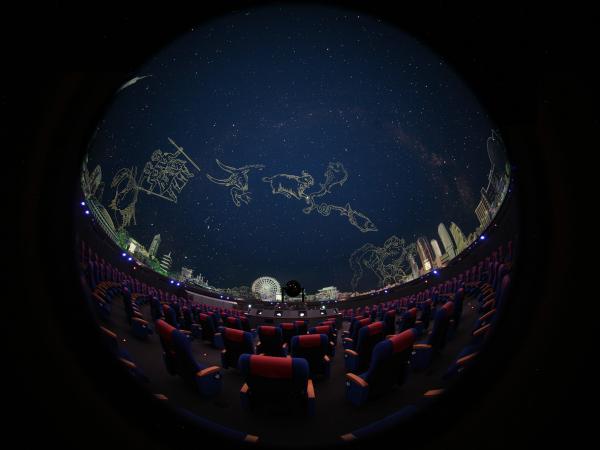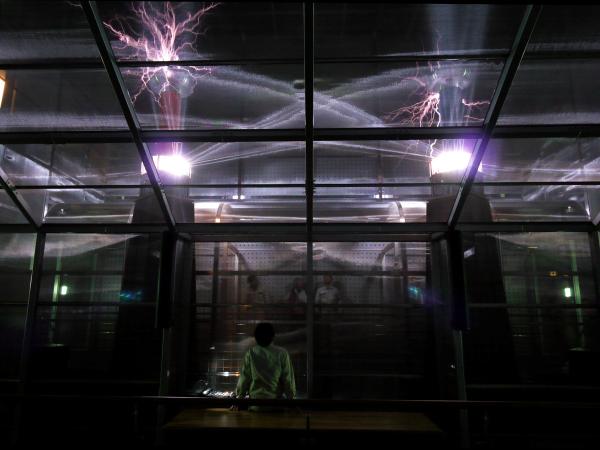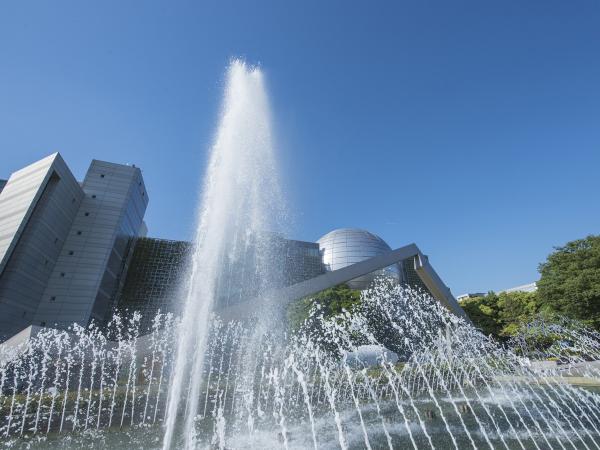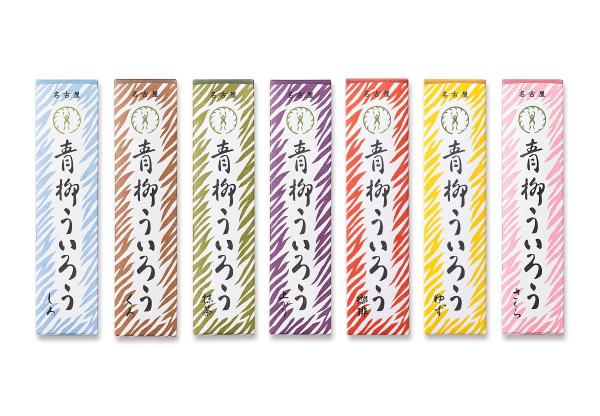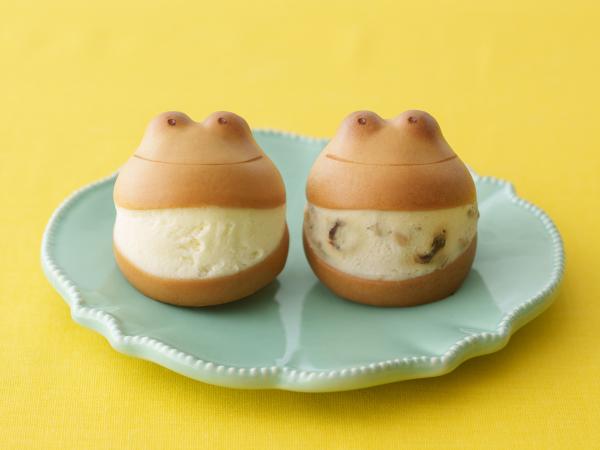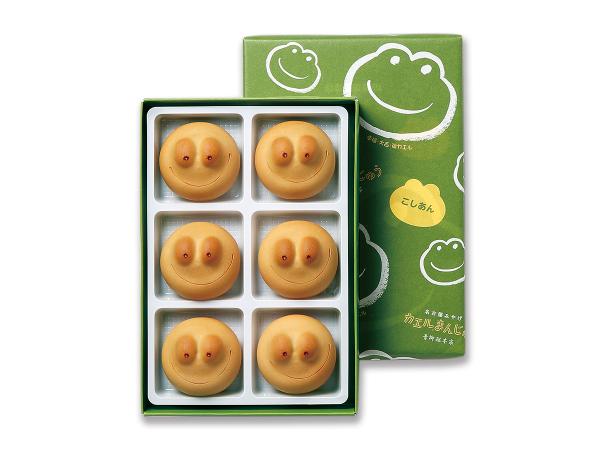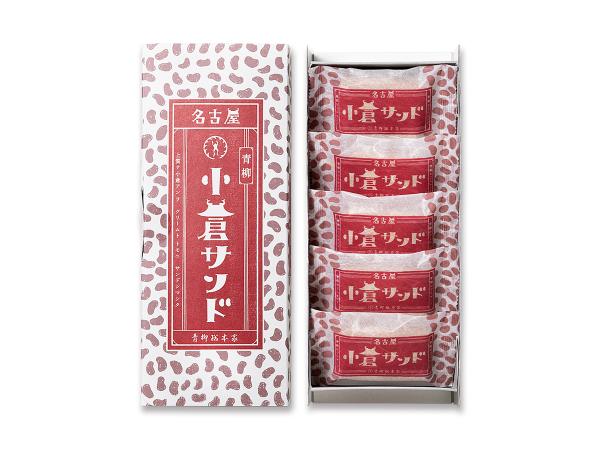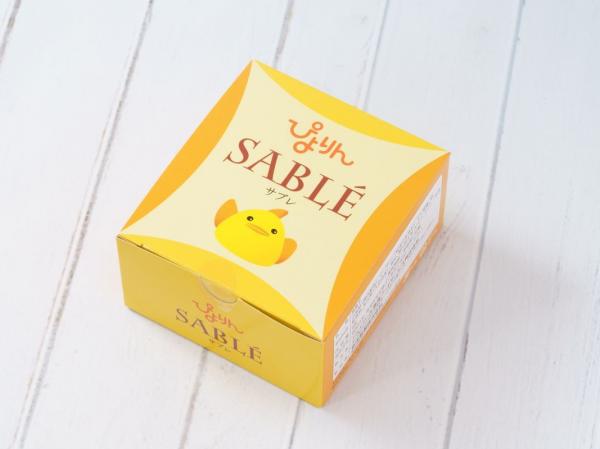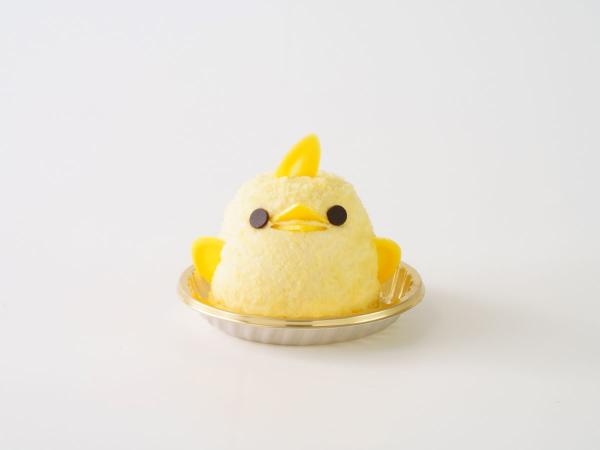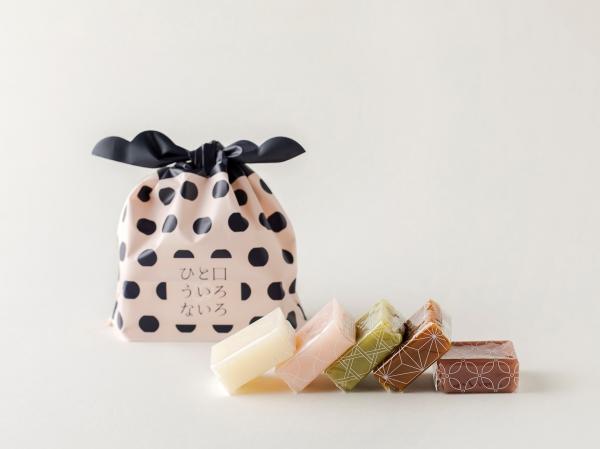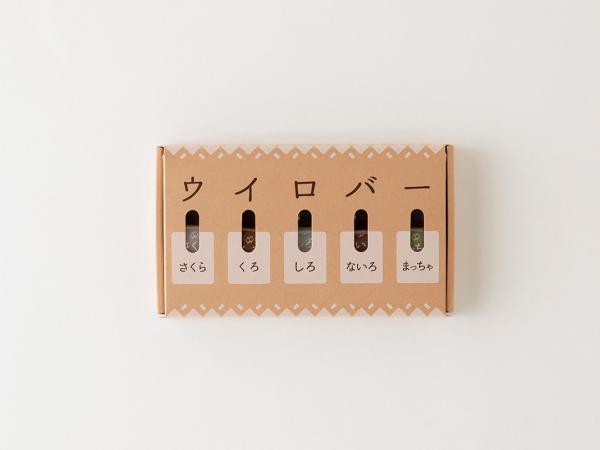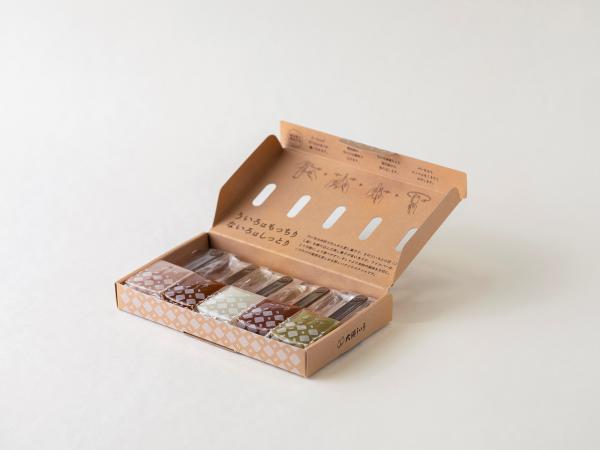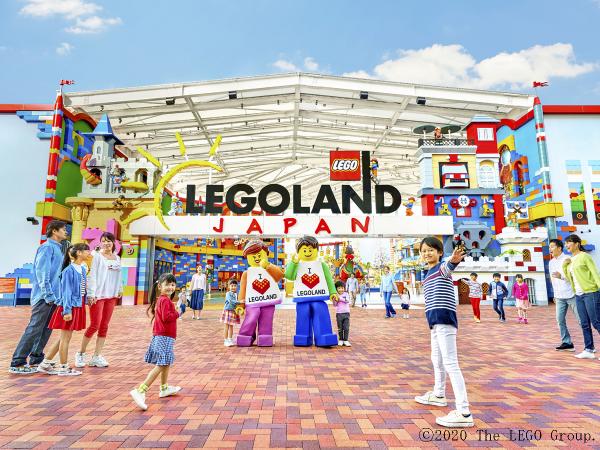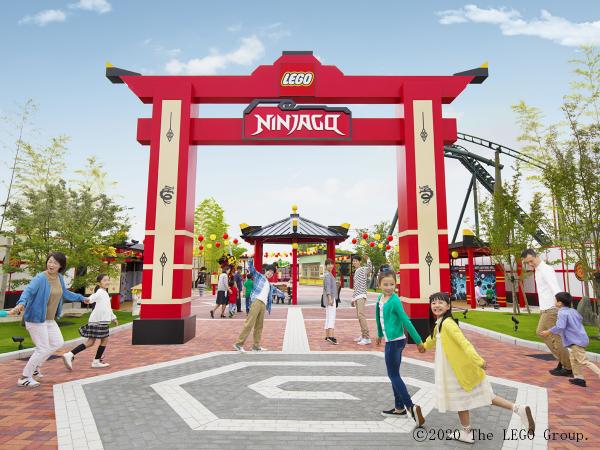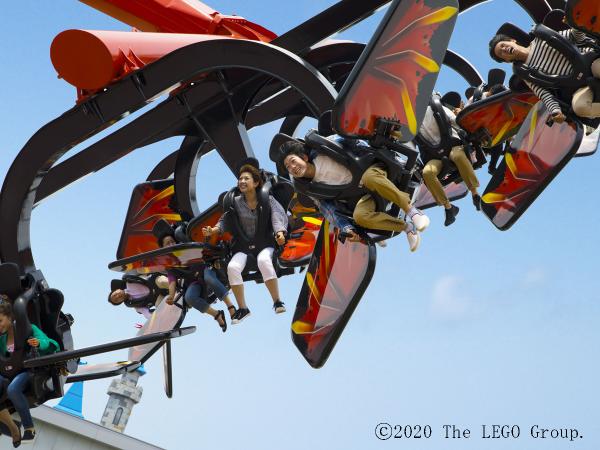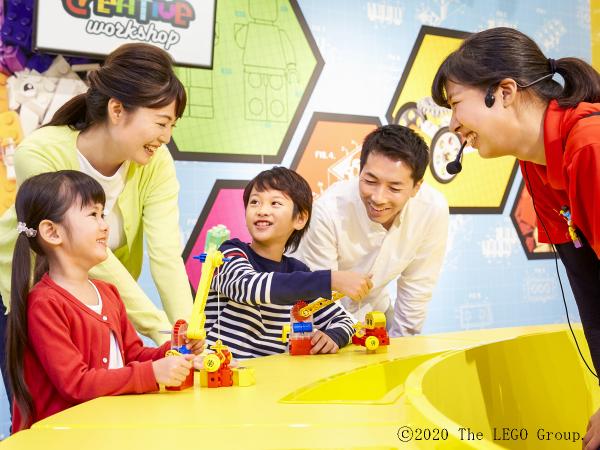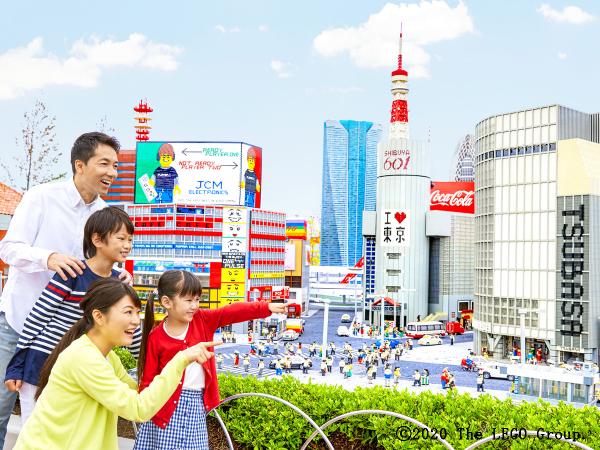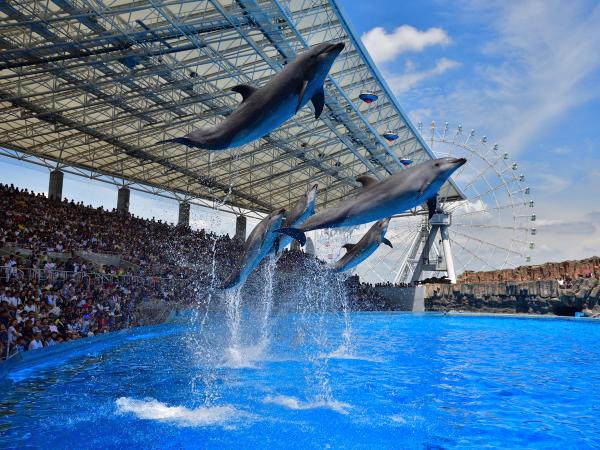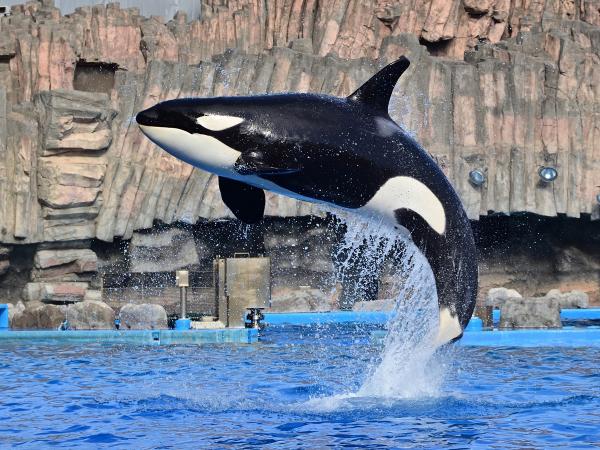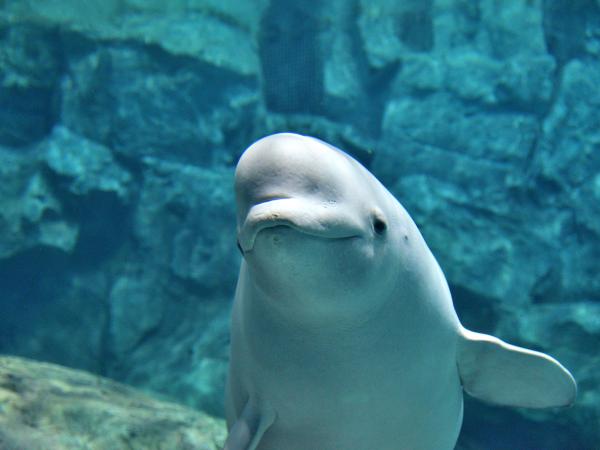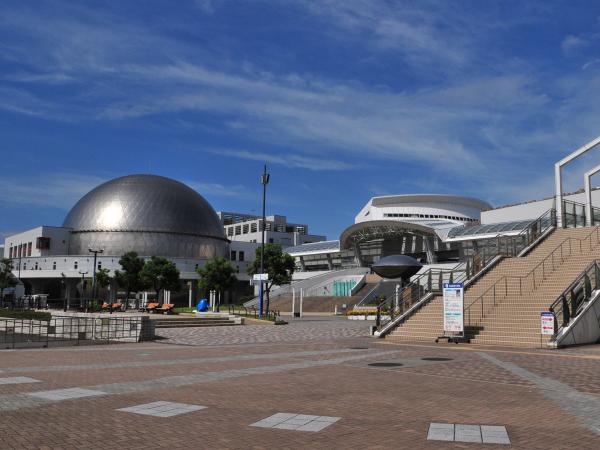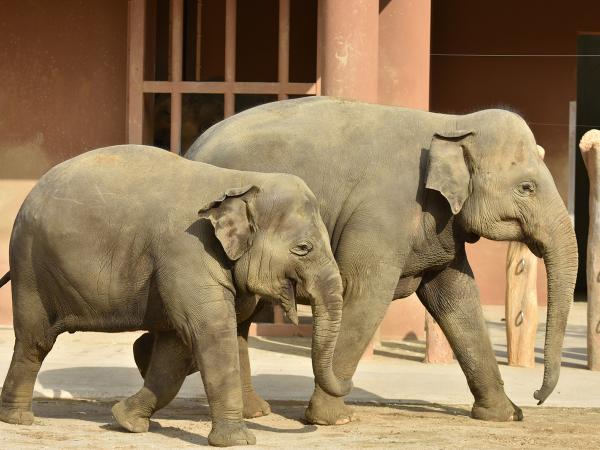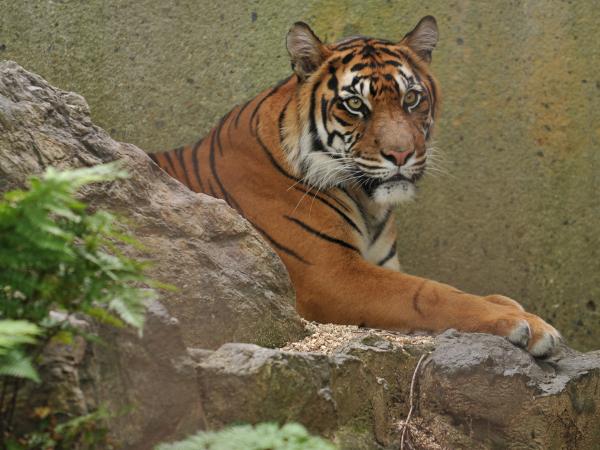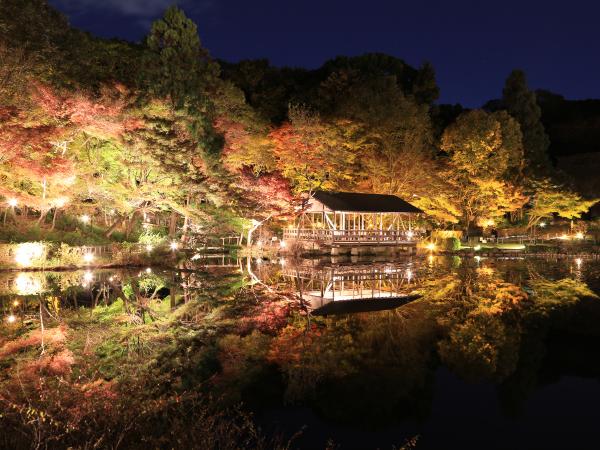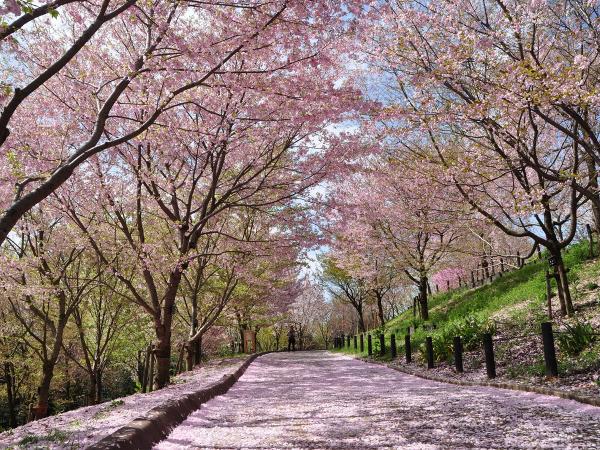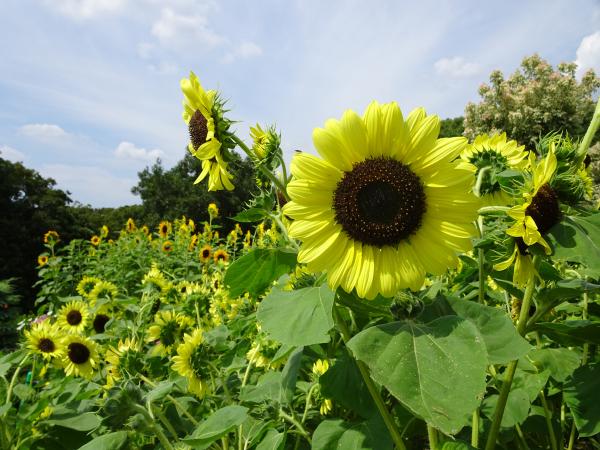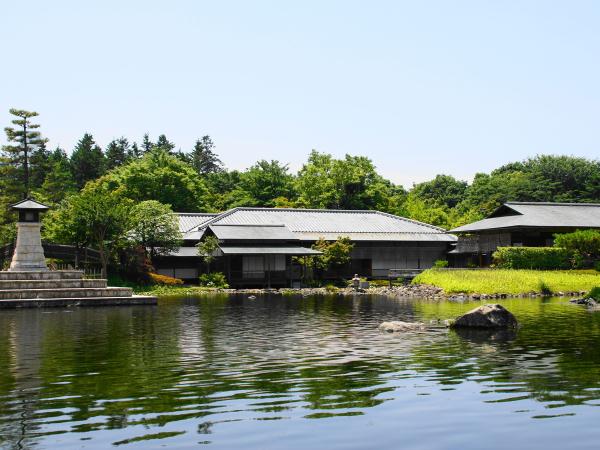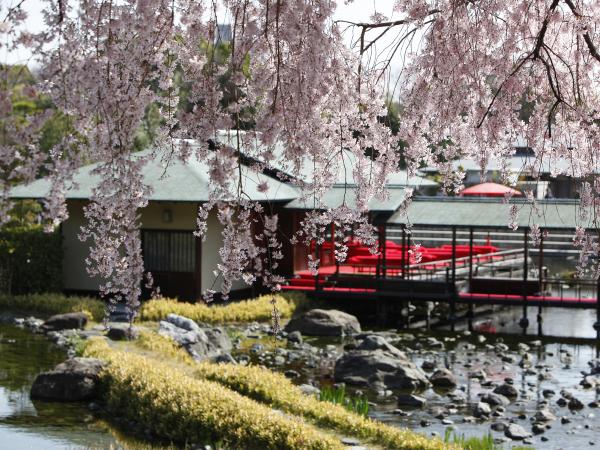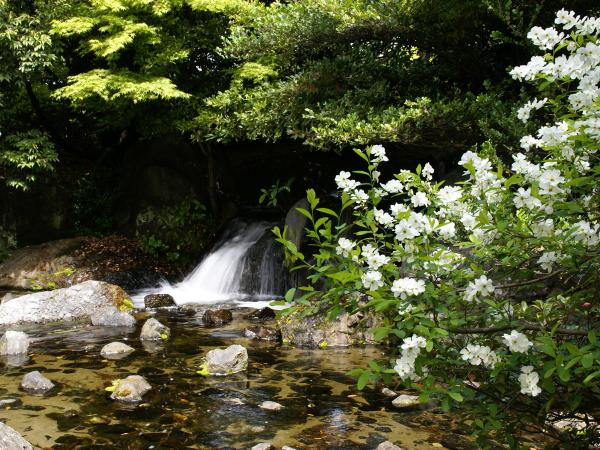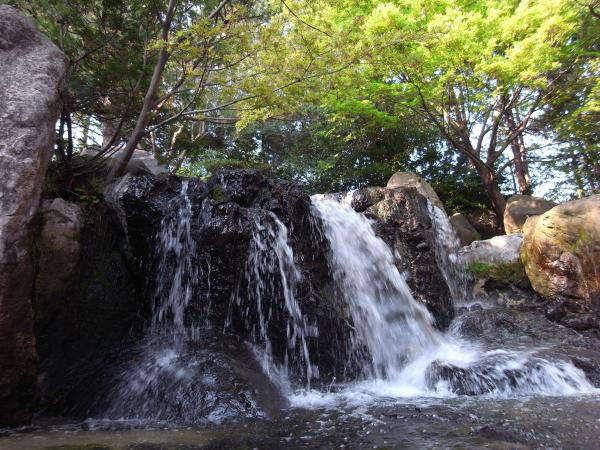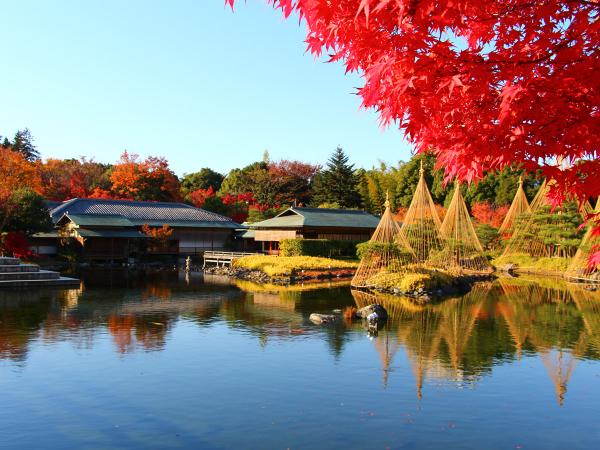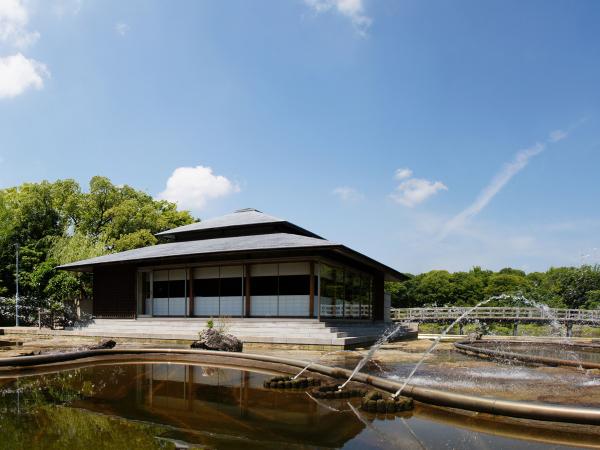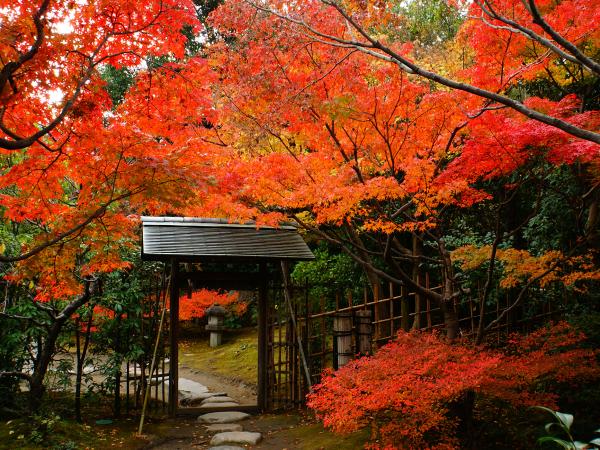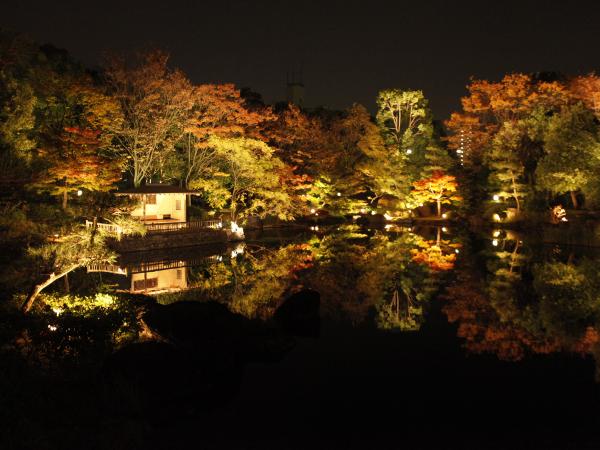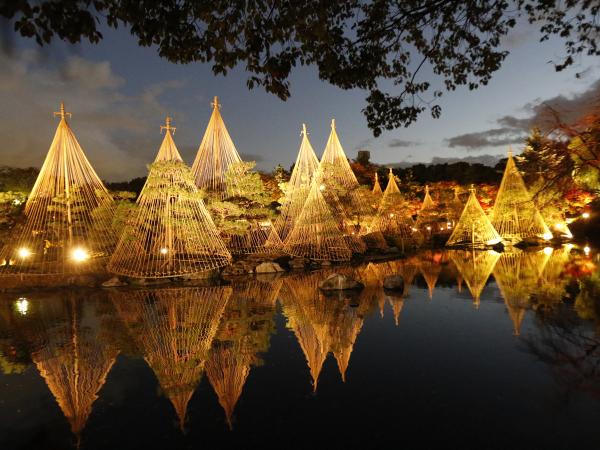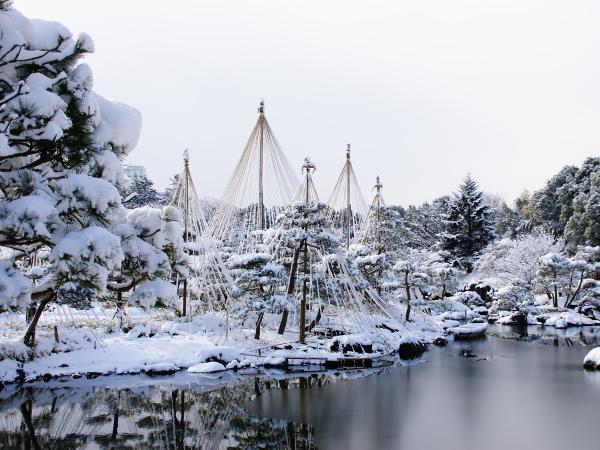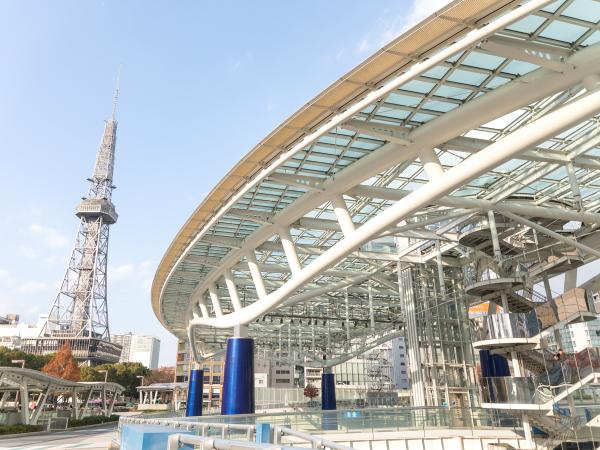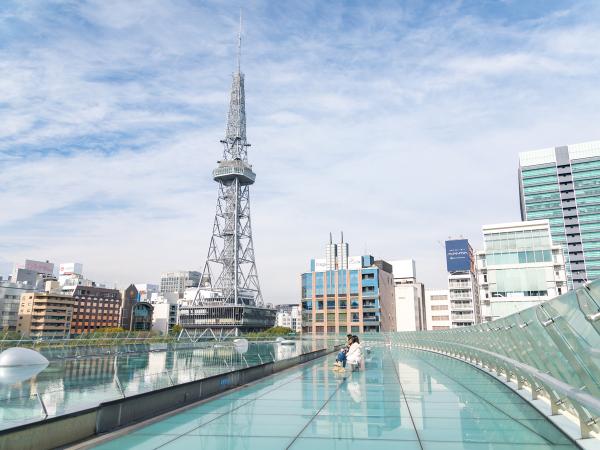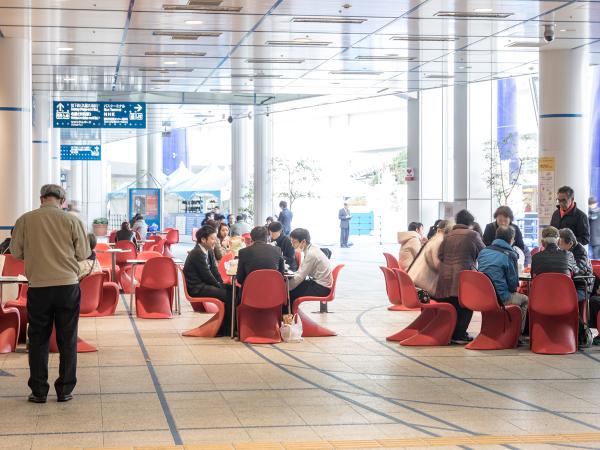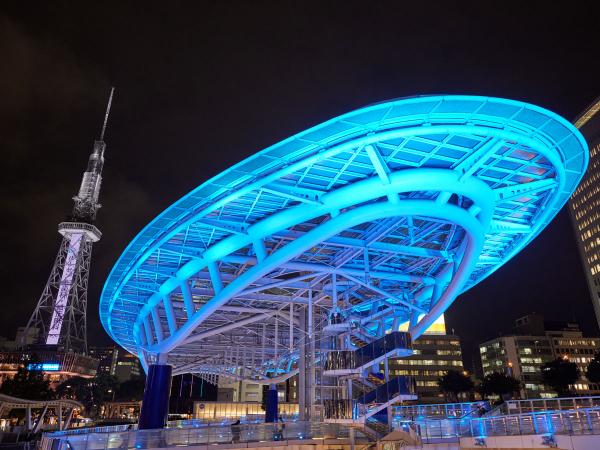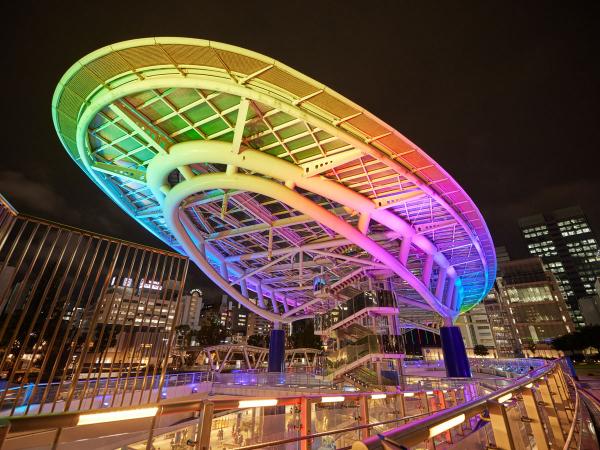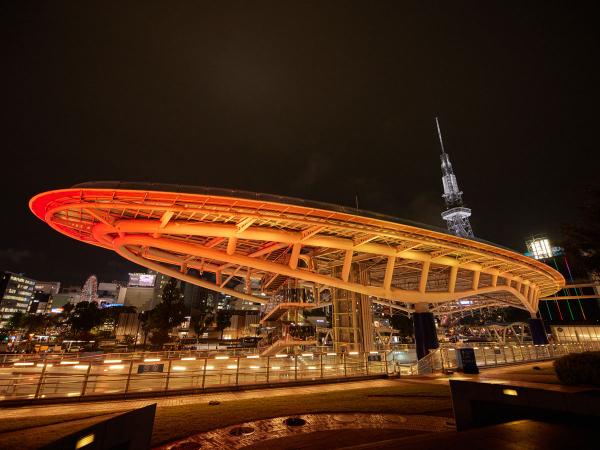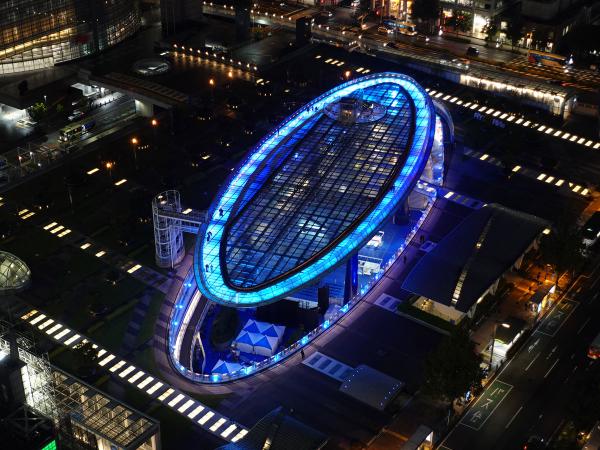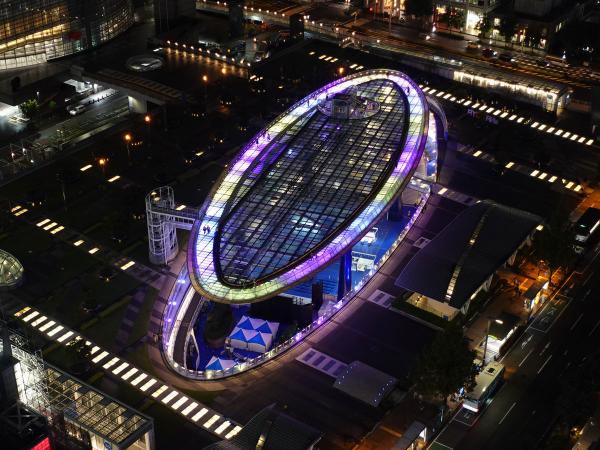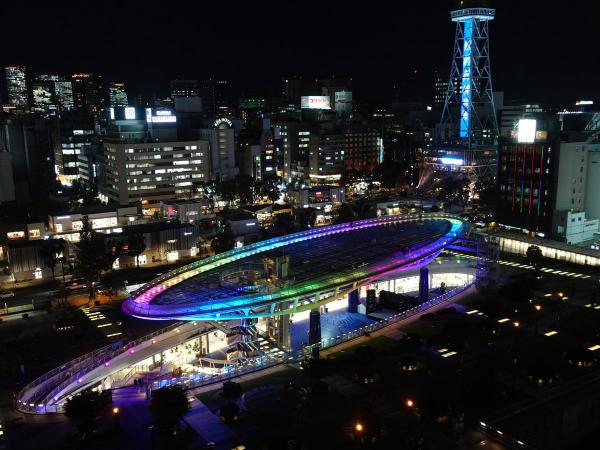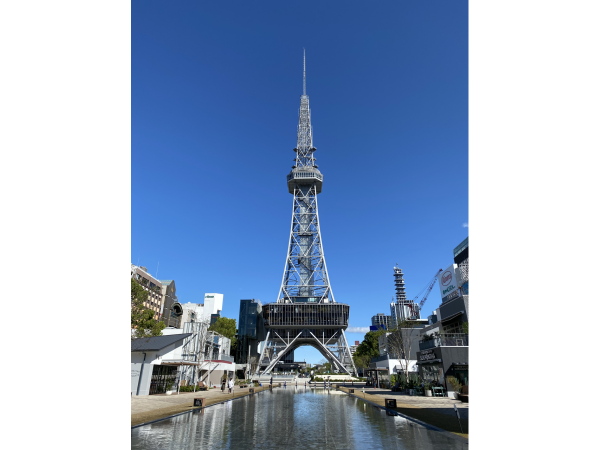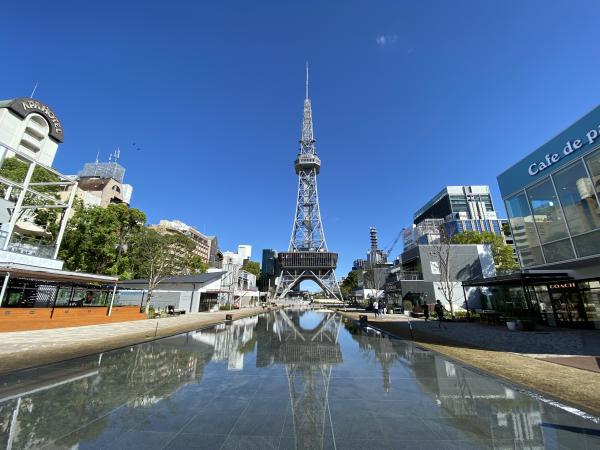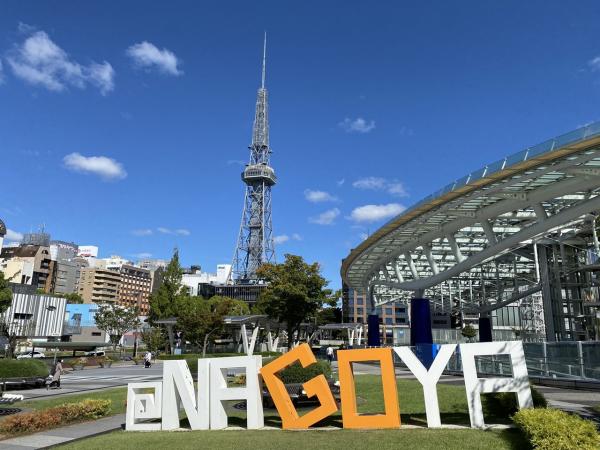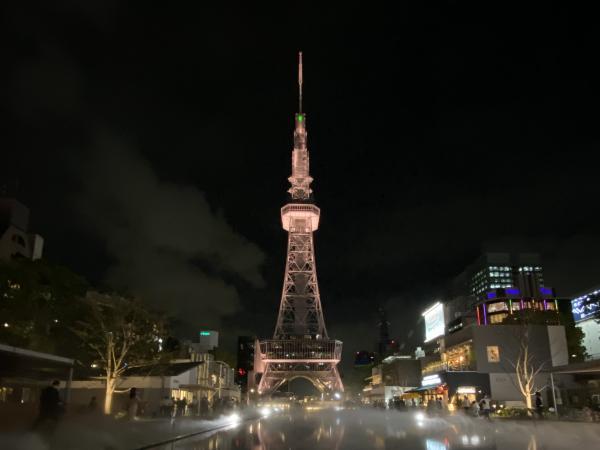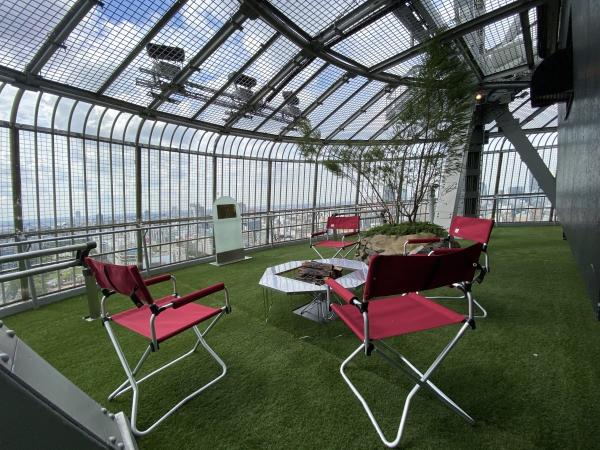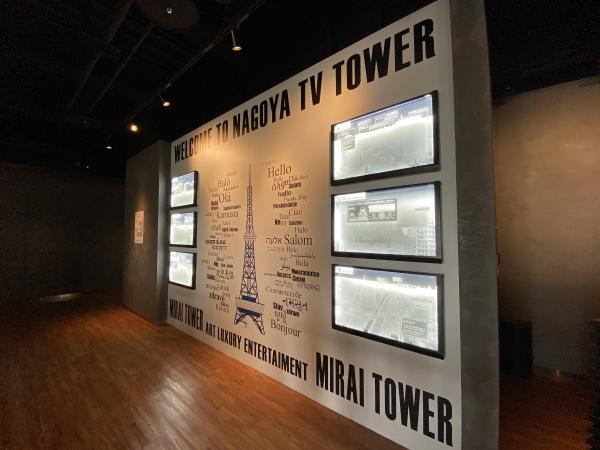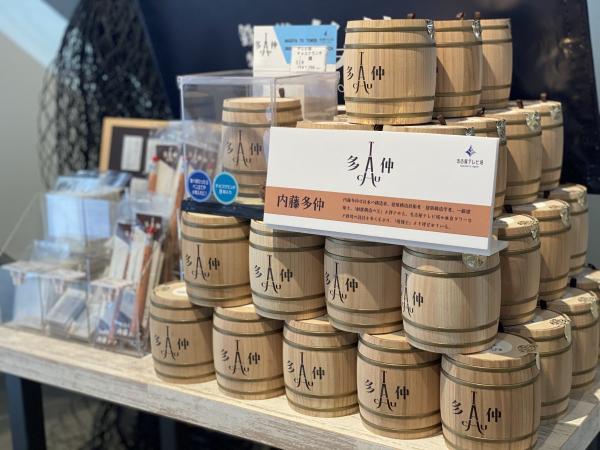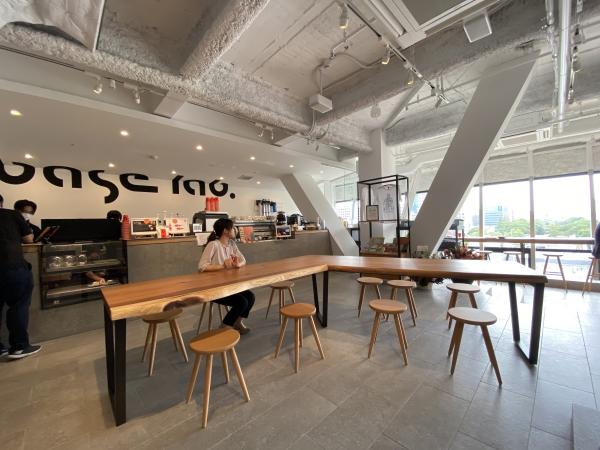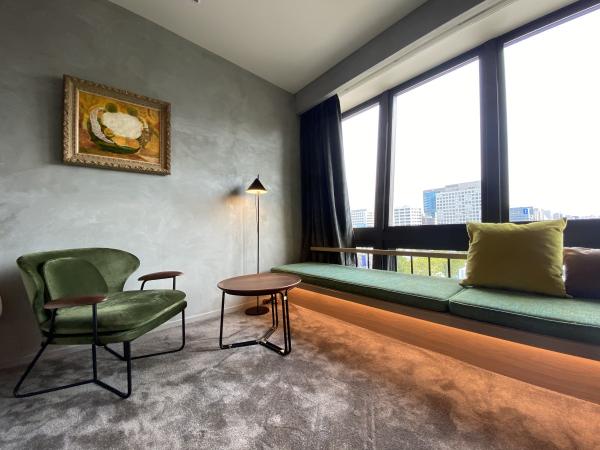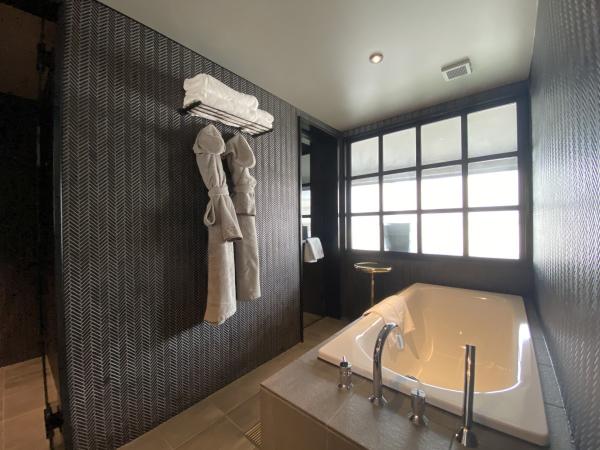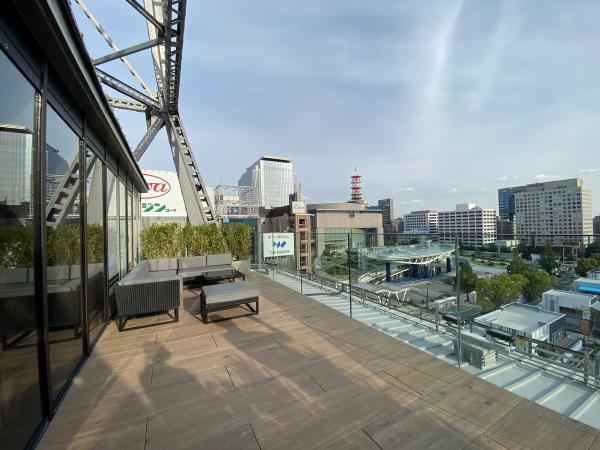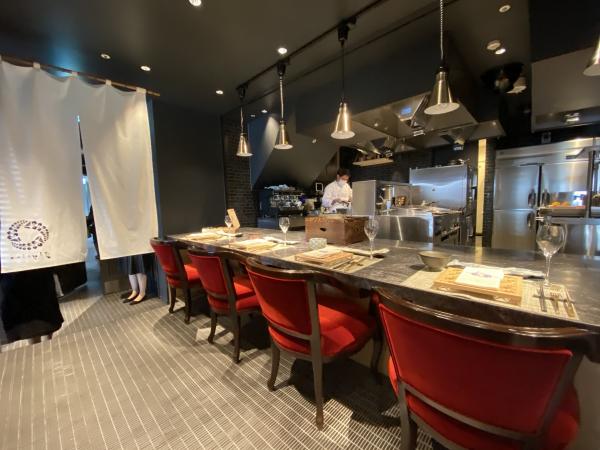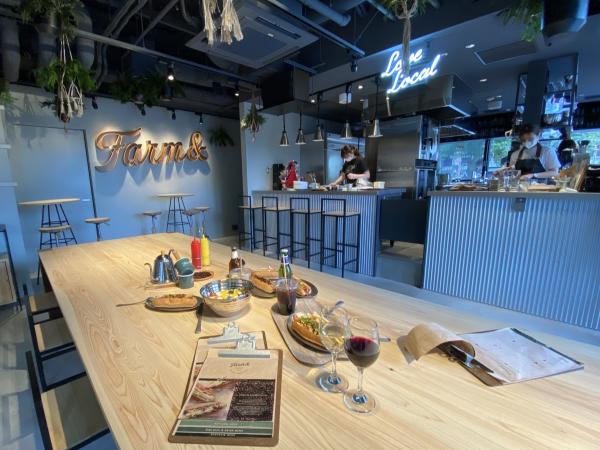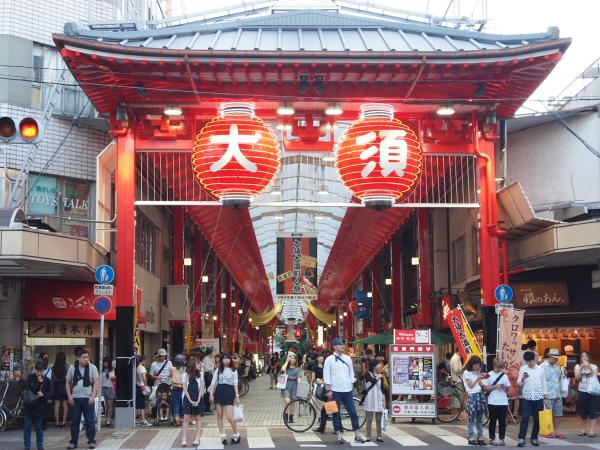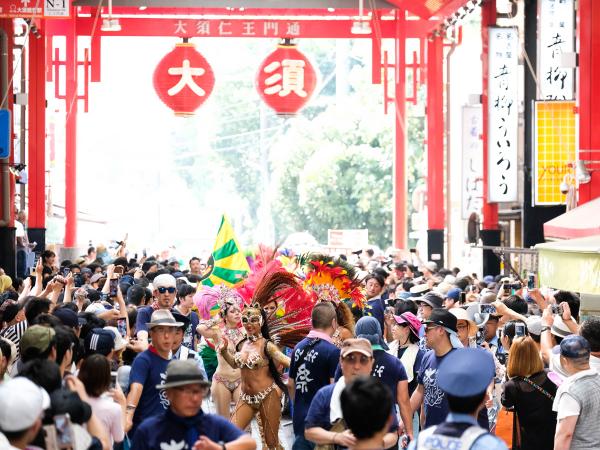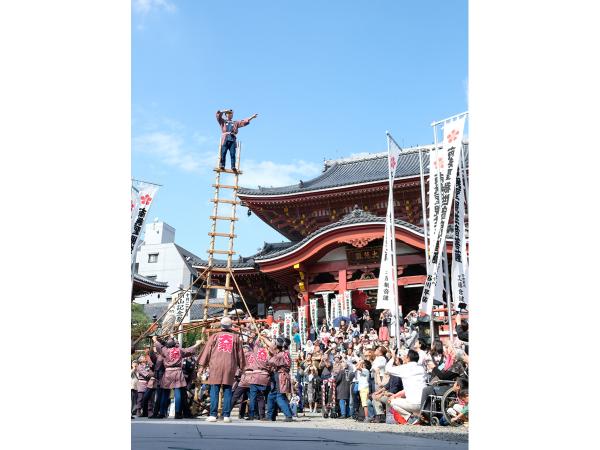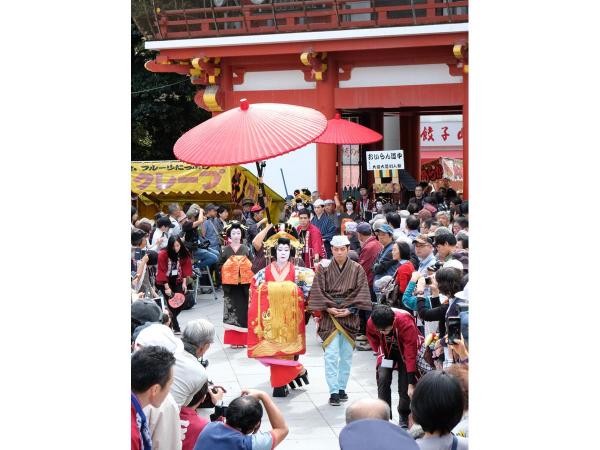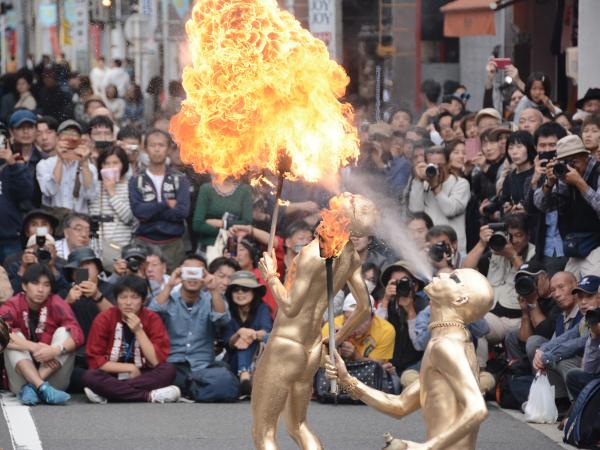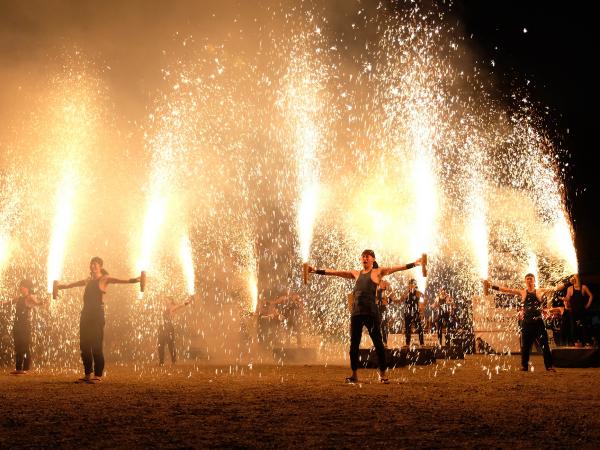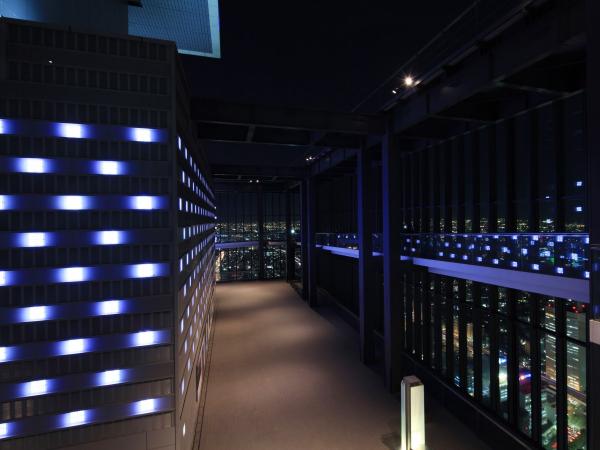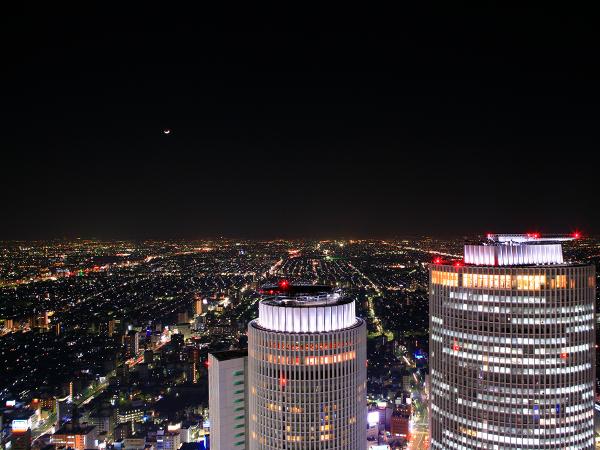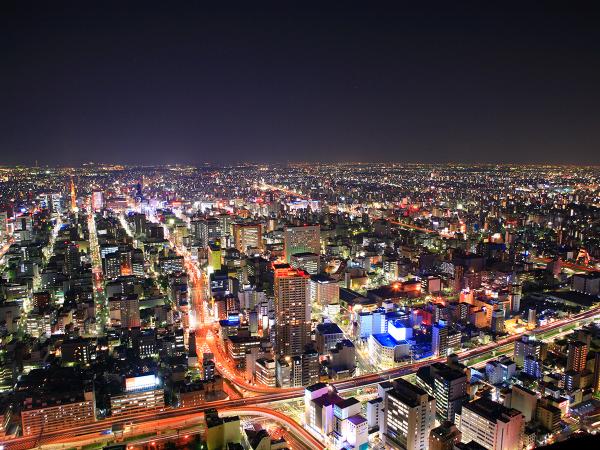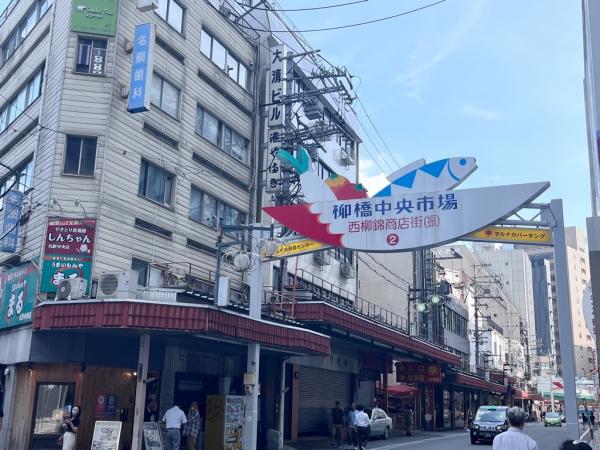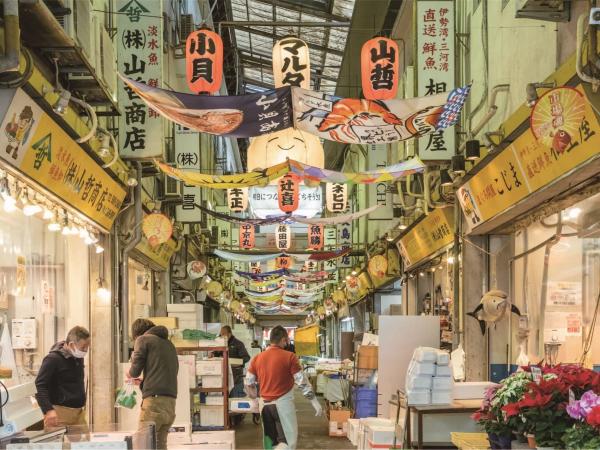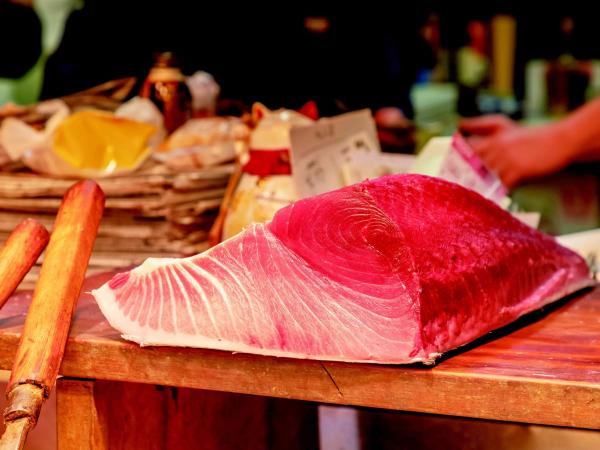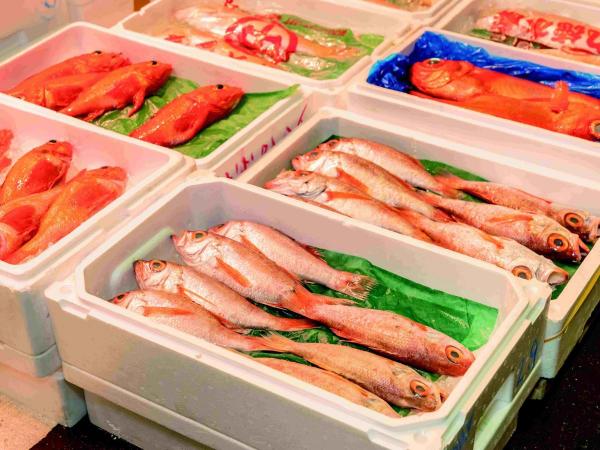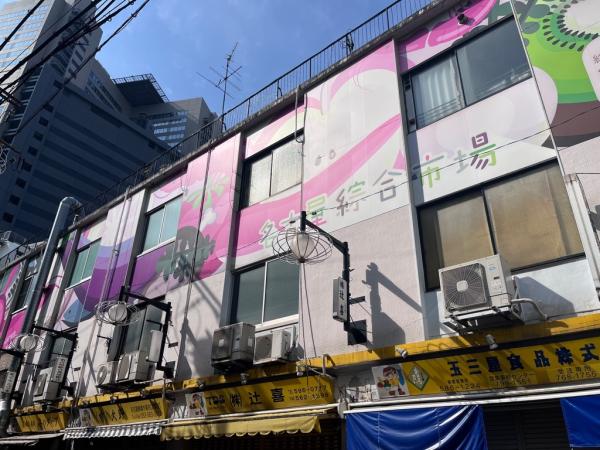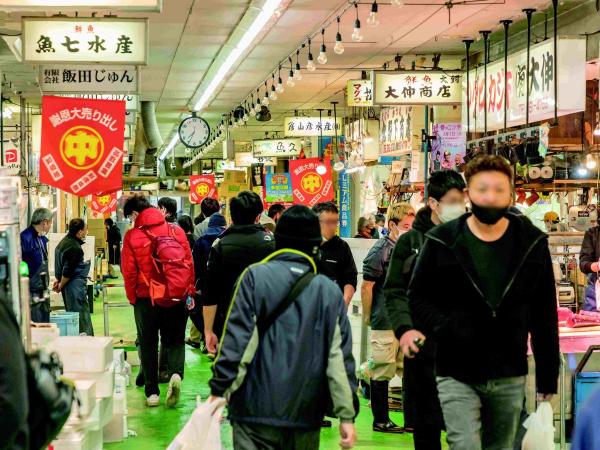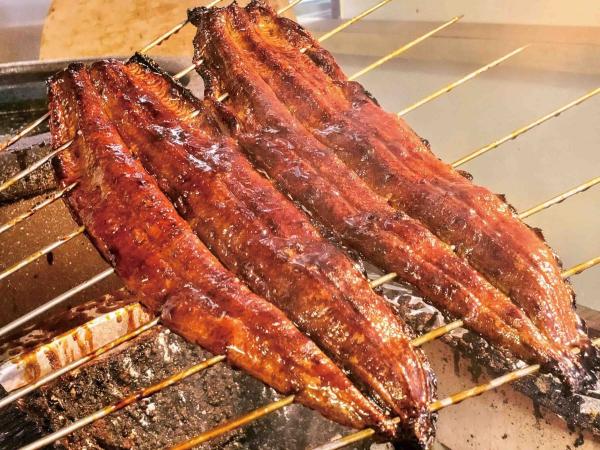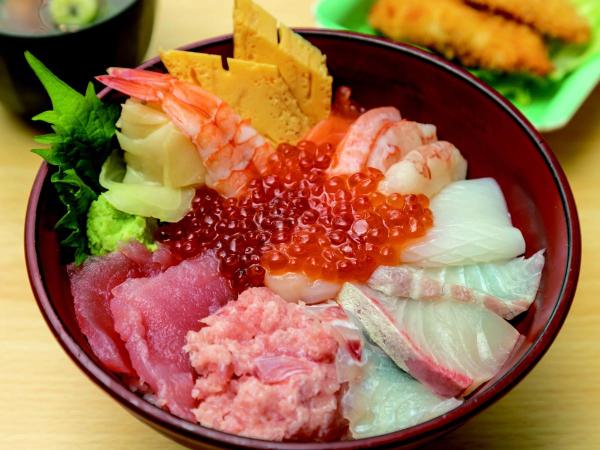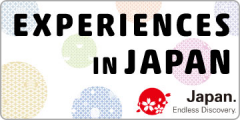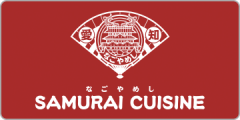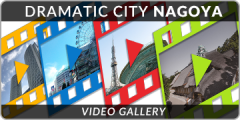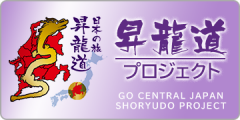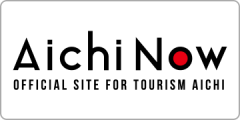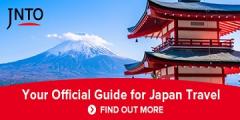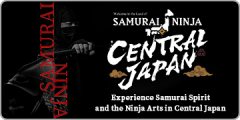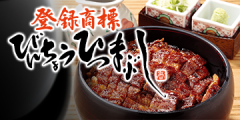- Home
- About Nagoya(Nagoya New adventures)

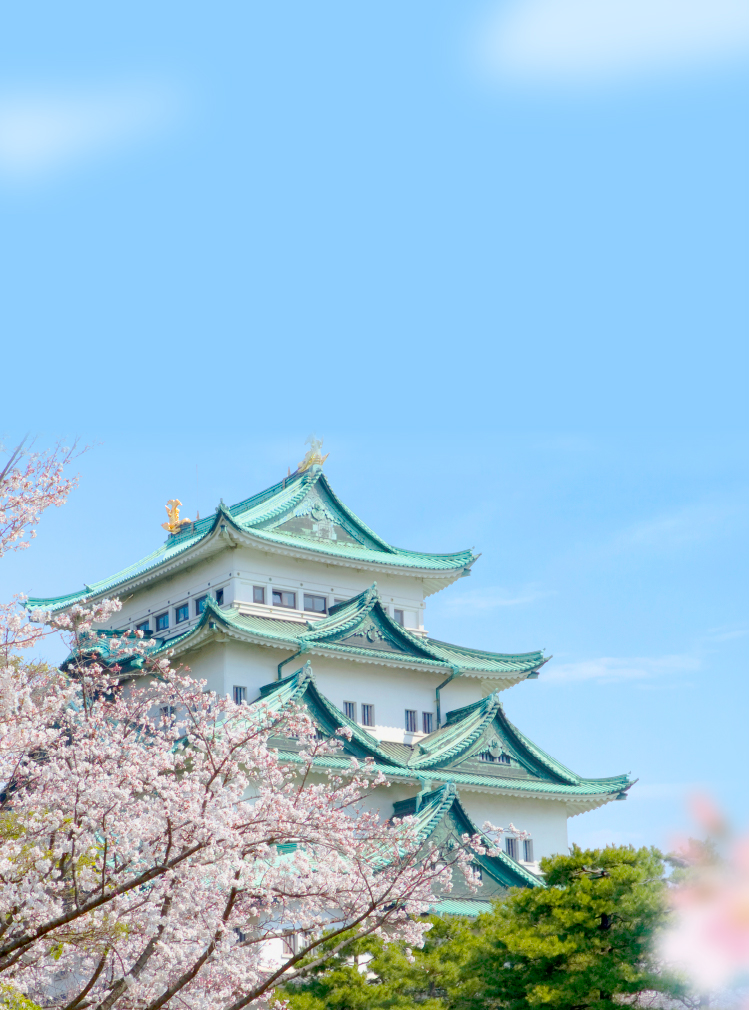
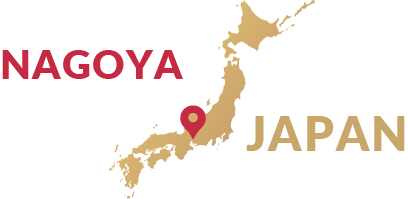
Nagoya lies right in the center of Japan and offers spectacular access to the main tourism hubs around the country for guests in Japan and from overseas. The city is home to a variety of famous historic, gourmet, and photogenic spots as well as hands-on experiences allowing you to discover Nagoya’s tradition and manufacturing prowess.
- NAGOYANew adventures
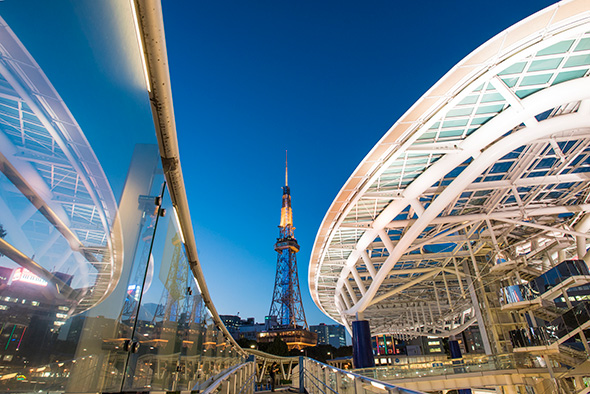
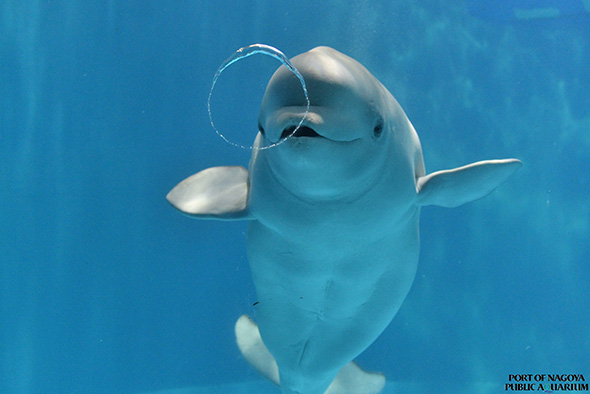
01
Must-see
Your Nagoya adventure starts here!
History & culture
Nagoya boasts a long and exciting history. Japan’s second most venerated shrine, the Great Shrine of Atsuta was established here 1,900 years ago, and is home to the legendary Kusanagi Sword, one of the nation’s Three Sacred Treasures and Three Imperial Regalia. Nagoya is the birthplace of the very first Shogun, Minamoto Yoritomo, and the origins of the Three Unifiers, Oda Nobunaga, Toyotomi Hideyoshi and the Shogun, Tokugawa Ieyasu, along with a host of other famous samurai whose successes forged the strong foundations for modern Japan. Being at the heart of the Sengoku, or Warring States period, many of history’s most famous samurai battles happened in and around the greater Nagoya region too.
Nagoya Castle features one of Japan's largest castle tower keeps, and arguably, the finest palace of any castle in Japanese history. Built by the Shogun Tokugawa Ieyasu and completed in 1612, it was the first of Japan's castles to be designated a National Treasure before its destruction through wartime bombing. Nagoya is also home to the world's finest collection of daimyo (warlord) armor, weapons and daily life items, including furniture, clothing, tea ceremony implements and personal effects housed in the magnificent Tokugawa Art Museum.
-
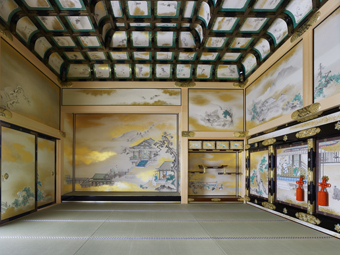
Nagoya Castle
-
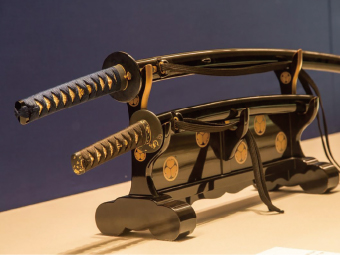
Tokugawa Art Museum
-
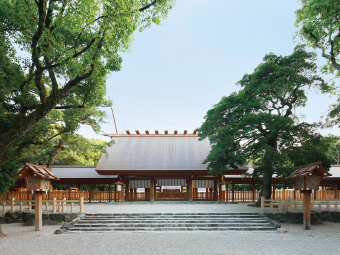
Atsuta Jingu Shrine
-
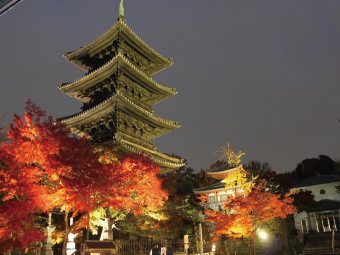
Yagoto Koshoji Temple
Industry
Nagoya is the capital of Aichi Prefecture, and together they form Japan's financially strongest region.
Surrounded by sea, mountains, rivers and plains, centrally located Nagoya had long been the envy of the many neighboring warlords. The wide, flat, fertile Nobi Plains were ideal for rice and crop production. The sea to the south was a rich fishing grounds and like the many surrounding rivers, was ideal for transportation and trade. Fine timber, clays and stone from the mountains made it most desirable, and so this bountiful region found itself at the heart of the Sengoku, or Warring States period. It is little wonder the Oda clan, and later the mighty Tokugawa clan chose Nagoya for the site of their great castles. Naturally, increased samurai military presence invited talented craftsmen, and many traditional industries were formed.
Innovation has always been part of Nagoya's culture, and this is where the Japanese art of manufacturing was perfected. The world's first wooden robots, mechanized puppets known as karakuri dolls, were developed in Nagoya during the early 1600's. Originally used atop the traditional festival floats unique to this area and as playthings for the affluent, the technology from these handcrafted wooden mechanical wonders led to automated loom manufacturing, which in turn influenced vehicle production line techniques, launching Nagoya's powerful industries.
The Nagoya region has also been a ceramics production area for over 1,000 years and is famed for its historical and modern textiles industry too.
Some of the world's biggest names Toyota, Rinnai, Brother, Noritake, NGK, Buffalo, Mitsubishi Heavy Industries, and so many more call Nagoya and the greater Nagoya region home. Today the Nagoya region is the nation's leader in automotive, machine tooling, robotics, fine ceramics and aerospace industry, and because of this, remains the financial powerhouse of Japan.
-
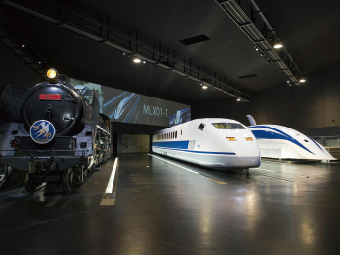
SCMAGLEV and Railway Park
-
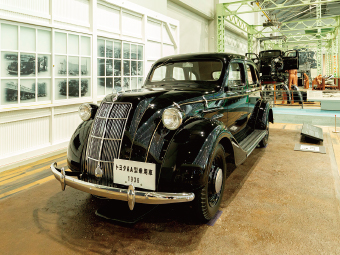
Toyota Commemorative Museum of Industry and Technology
-
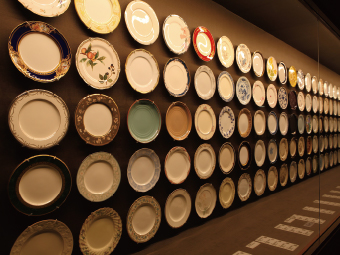
Noritake Garden
-
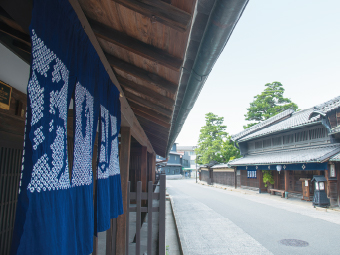
Arimatsu townscape & Arimatsu tie-dyeing experience
-
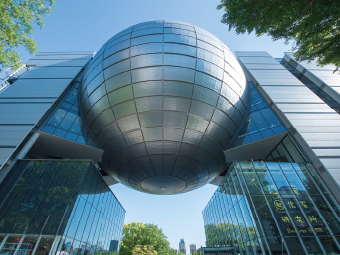
Nagoya City Science Museum
Amusement & parks
Nagoya is full of unique leisurely facilities for fun no matter your age.
The port area is home to numerous large-scale facilities perfect for everything from dates to family outings, such as the Port of Nagoya Public Aquarium and LEGOLAND® Japan. LEGOLAND® Japan is an outdoor theme park with an exciting world perspective portrayed by some 17 million LEGO® blocks and around 10 thousand LEGO® models. The Port of Nagoya Public Aquarium offers a myriad of events and programs providing guests with an experiential understanding of aquatic life through their eyes and fingertips.
The eastern area's lush nature is home to Higashiyama Zoo and Botanical Gardens—a complex opening doors to the worlds of both animal and plant life. But don't just observe the animals; you can learn about their behavior and habitats through stimulating, educational exhibits.
You can also appreciate Japanese artistry at Shirotori Garden—a Japanese garden designed around a pond and the perfect location for incredible walks through each of the four seasons.
-
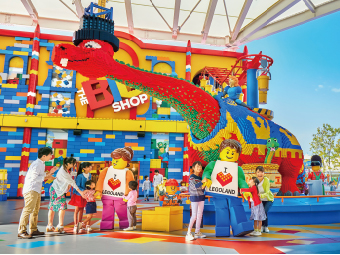
LEGOLAND® Japan
-
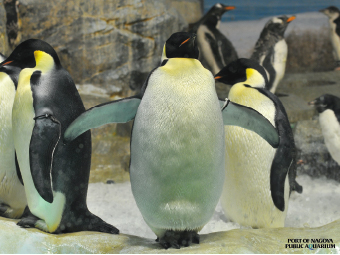
Port of Nagoya Public Aquarium
-

Higashiyama Zoo and Botanical Gardens
-
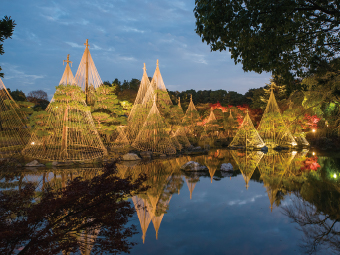
Shirotori Garden
Urban tourism
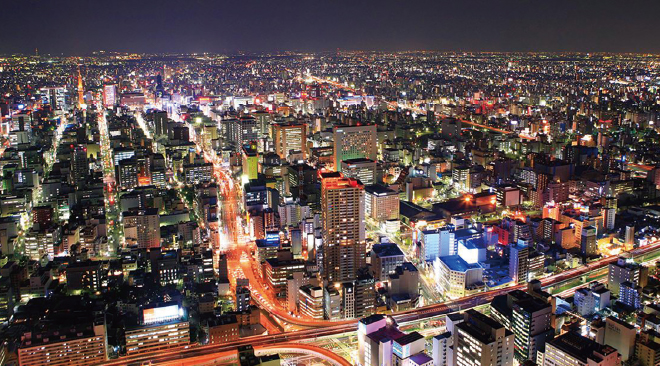
NIGHT LIFE & SIGHTSEEING

Sprawling and mostly flat, Nagoya at night provides an amazing sight. Try a helicopter night flight over the city from the Komaki based Nagoya Airport, or see the city landmarks from the Sky Promenade on the top 3 floors of Nagoya’s highest building, the 46 story Midland Square. Alternatively, Higashiyama Sky Tower is said to be among Japan’s best night views.
Popular summertime rooftop Beer Gardens dot the city center, while the central Nishiki 3-Chome areas’ nightclubs, pubs and discos really only come alive after dark.
Other night attractions include the Nagoya Port fun park, Sea Train Land with its huge illuminated Ferris Wheel and other side-shows. This can be coupled with a weekend Nagoya Port Night Cruise taking in the surprisingly beautiful-at-night factories lit up like year-round X-mas trees. See the towering Nagoya Castle lit up at night, or for something a little more cultural, one of Nagoya's oldest remaining traditional restaurants dating back over 400 years, the Kawabun, offers Cultural Nights, with traditionally trained Geisha providing song, dance and timeless entertainments while interacting directly with the clientele.
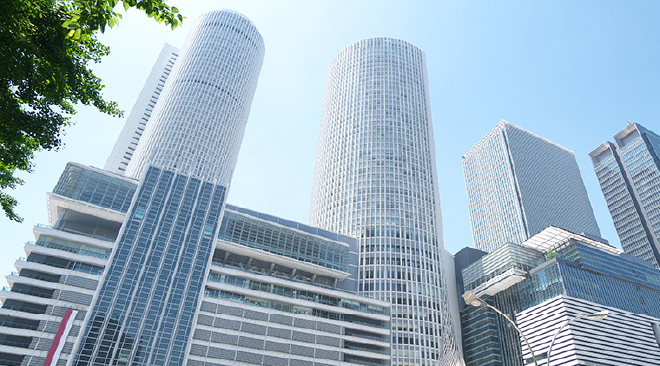
SHOPPING
(NAGOYA STATION / SAKAE AREA)

The citizens of Nagoya are said to have the nation's highest levels of personal savings, and the people of Nagoya love their shopping. This is most evident around the upmarket Nagoya Station area, and the popular Sakae area, where many famous brand name stores and quality department stores can be found.
One of the world's oldest remaining department stores is Nagoya based Matsuzakaya, established in 1611. The flagship store is located in the city central Sakae area, beside such other famed stores as Mitsukoshi, the popular LaChic and Parco. In between are brand name and specialty stores catering to a wide range of tastes, styles, ages and wages. The advantage of shopping in Nagoya is a large range of items in a more convenient compact area.
-
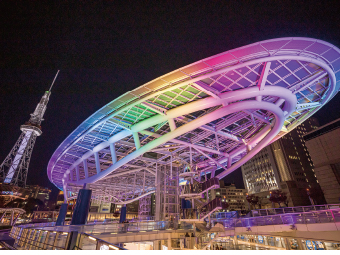
Oasis21
-
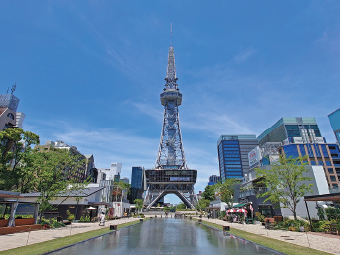
Chubu Electric Power MIRAI TOWER / Hisaya-Odori Park
-
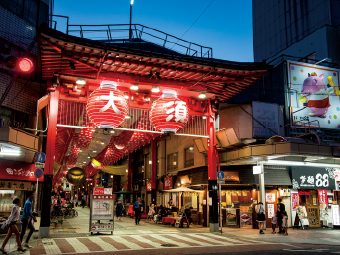
Osu Shopping District
-
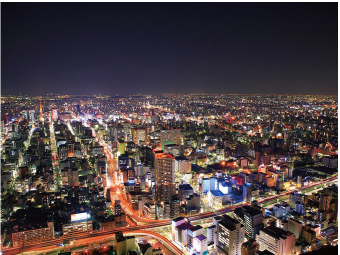
MIDLAND SQUARE’s open-air observation deck SKY PROMENADE
-
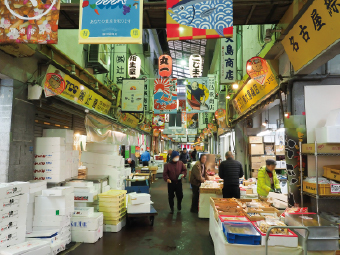
Yanagibashi Central Market Marunaka Center
Gourmet / Nagoya Meshi
(Local cuisine)
Nagoya’s cuisine, known affectionately as “Nagoya Meshi”, is without doubt the most unique food culture within mainland Japan. Although it is undoubtedly Japanese, it is among the most Western-friendly of Japanese cuisines, and often a welcomed alternative to the unfamiliar Japanese fare one encounters on trips to Japan.
While Japanese food is as much a feast for the eyes as it is the palate, Nagoya Meshi admittedly looks a little bland. Everything is brown, but what it lacks in color, it certainly makes up for in taste. A highly nutritious and delicious traditionally fermented soybean paste called miso is often used in Nagoya Meshi.
Must try items include Miso Nikomi Udon, thick, udon noodles simmered in a rich miso-based broth, perfect for those cold winter days. Tebasaki, Nagoya fried chicken wings, deep fried wings dusted with an eclectic mix of herbs, salts and seasoning, enjoyed anytime, anywhere. Kishimen are long flat noodles in a unique soup supposedly enjoyed by the samurai of old. Hitsumabushi, grilled eel served on a bed of rice with various condiments included to enjoy in four ways, and Miso Katsu, soft pork cutlets smothered in a topping of miso sauce. Large fried shrimp, known as ebi fry, also the locally bred Nagoya Cochin chicken, Ogura Toast, being sweet red beans served on toast, and temmusu, fried shrimp in rice-balls, are perennial local favorites. There's so much more to discover, taste and enjoy when you visit Nagoya.
Sweets
-
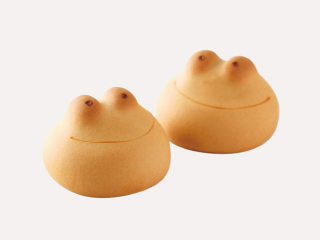
Kaeru Manjyu
-
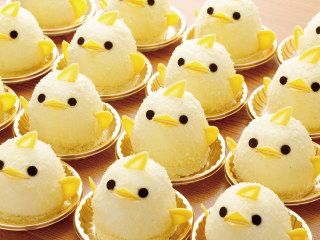
Piyorin Cakes
-
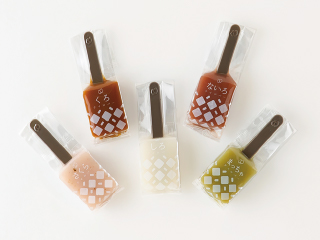
Uiro Bars
02
Japan’s four seasons
Autumn
-
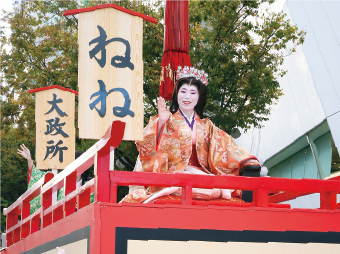
Nagoya Festival
The Nagoya Festival began in 1955 as the city's fall festival. Warriors and princesses with historical ties to Nagoya proceed around the city in the famous Local Heroes Parade.
-
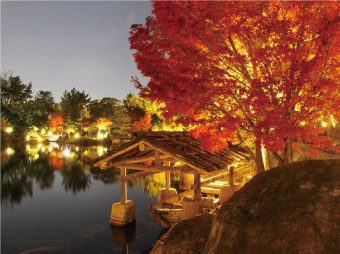
Autumn colors (Tokugawaen Garden)
Around 100 maples paint Tokugawaen Garden in fiery fall hues. For a limited time, the garden is illuminated for an even more surreal scene of the Japanese garden.
Winter
-
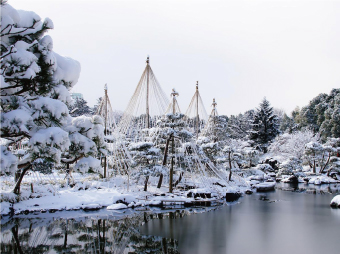
Snow scenes (Shirotori Garden)
This Japanese garden is constructed in traditional style and showcases its winter beauty through a tapestry of ropes supporting branches when snow falls. Enjoy a variety of landscapes by season with cherry blossoms in spring and vivid autumn colors in fall.
-
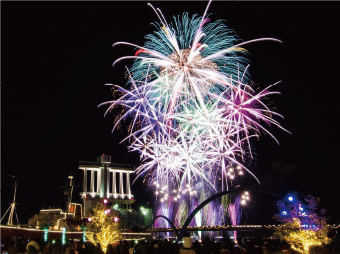
ISOGAI Fireworks
The Port of Nagoya offers a stunning fireworks display in winter. Become a part of the moment when music and fire come together.
03
Popular outlying tourist spots
-
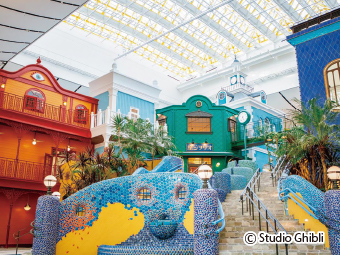
Ghibli Park
Aichi Prefecture's city of Nagakute is home to Ghibli Park, where you can explore the world of Studio Ghibli. Make sure to plan ahead as advance ticket reservation is necessary.
-
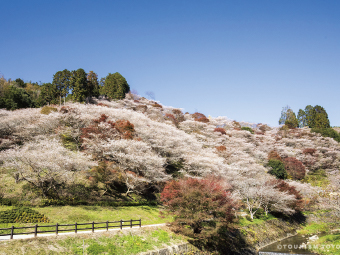
Obara Shikizakura Cherry Blossoms
Shikizakura cherry blossoms occur in both spring and autumn. While a rarity in Japan, the Obara area is home to 10 thousand, whose light pink hues paint a stunning picture together with fiery fall colors.
-
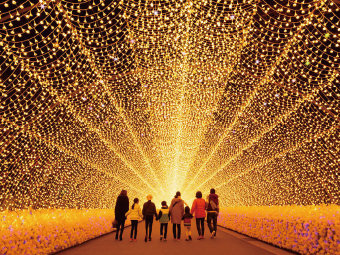
Nagashima Resort
Kuwana City in Mie Prefecture invites you to its comprehensive resort featuring a theme park, flower gardens, hot springs for single-day visits, accommodations, and an outlet mall all in one place. Easy to get to from Nagoya with an approximate one-hour trip by train or shuttle bus, or around a 30-minute drive on the freeway.
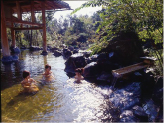
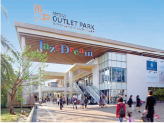
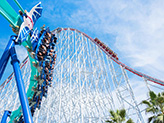
04
Experiences & tours
What to do in Nagoya and how to experience it hands-on
From snacking on tasty treats during a stroll through the streets to Japanese calligraphy, kabuki shows, trying on kimono and yukata robes, sake tastings, and homestyle Japanese cooking—Experience it all in a journey through Nagoya you'll never forget.
Find ideas for your next destination
Want to see more
of what makes Nagoya unique?
Then let our
special features show you.
05
Access
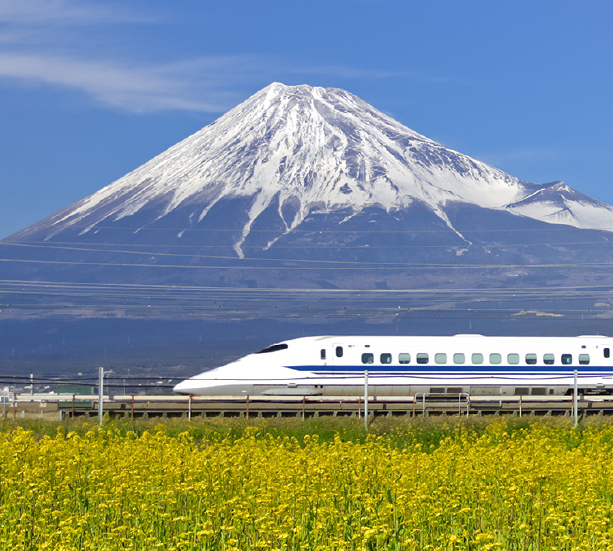
As the most centrally located major city, Nagoya evolved early as a major transportation hub and offers complete infrastructure for land, sea and air transportation, making it an ideal base for businesses and tourists. Numerous major highways lead to and from Nagoya. The Shinkansen Bullet Train system is centered in Nagoya, as are a number of standard rail systems, and the Linear Mag-Lev super high-speed Bullet Train services linking Nagoya and Tokyo in 40 minutes are planned to commence operation from 2027 onward. There is easy access to the two airports, the Komaki based Nagoya Airport, just 35 minutes north of the city center, and the multi award winning Central Japan International Airport, Centrair, located about 30 minutes by express train south of the city. The Port of Nagoya is Japan's busiest port, connected to over 170 countries world-wide and handling over 157 million tons of cargo annually. Nagoya is without a doubt the central hub of Japan, the hub that keeps Japan Inc. on track and its wheels rolling smoothly.

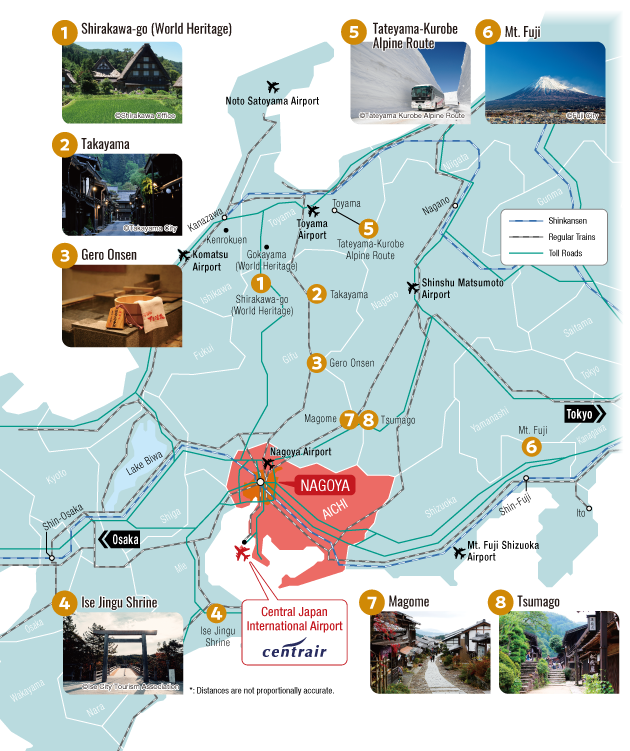
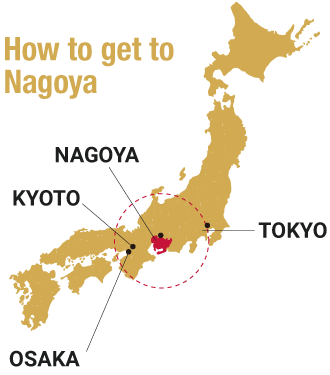
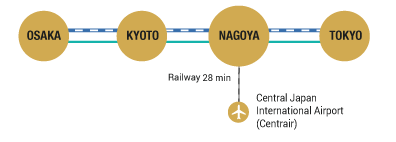
 |
 |
|
|---|---|---|
| NAGOYA - TOKYO | 1h 40min | 6h |
| NAGOYA - KYOTO | 35min | 2h |
| NAGOYA - OSAKA | 50min | 3h30min |
*Times are approximate
/
Nagoya Castle
In 1610, Tokugawa Ieyasu began the construction of Nagoya Castle, as a residence for his son Yoshinao. The castle burned down in the war, but in 1959, the five-story main tower keep (approx. 48 meters), with its golden shachi ornaments, and the sub tower keep (approx. 24 meters) were reconstructed.
The Nagoya Omotenashi Bushotai greet visitors every day at the main gate, and were the reason behind the bushotai boom across the nation. They also put on an omotenashi performance on weekends and national holidays.
In addition, Hommaru Palace was fully opened to the public on June 8, 2018, after the completion of reconstruction work that had taken over 10 years.
Details
| Address |
〒460-0031 1-1 Hommaru, Naka-ku, Nagoya-shi, Aichi |
|---|---|
| Area | Northern Area |
| Access | • Next to the Me~guru Nagoya Sightseeing Route Bus's fourth bus stop: Nagoya Castle Bus Stop. • 5-min. walk from Exit 7 of Nagoyajo 'Nagoya Castle' Station on the Meijo Subway Line. |
| TEL | +81-52-231-1700 |
| FAX | +81-52-201-3646 |
| Opening Hours | 9:00 am–4:30 pm (admission until 4:00 pm) |
| Regular Holiday | Dec 29–Jan 1 (subject to change due to events) |
| Cost | Adults: JPY 500 Note: • Free of charge for junior high school ages and younger. |
| Parking | Paid parking available (JPY 180/30 min.) • 431 passenger vehicle parking spaces • 28 passenger bus parking spaces (available for a fee) |
ACCESS MAP
Close
The Tokugawa Art Museum
An art museum of important artifacts from the Owari Tokugawa family, including items inherited from Tokugawa Ieyasu
This art museum has a collection of more than 10,000 feudal lord implements, starting with items that once belonged to Tokugawa Ieyasu, and items treasured by the first head of the Owari Tokugawa family, Yoshinao (Ieyasu's ninth son), and his descendants. The museum is proud to hold nine National Treasures, including the Illustrated Scroll of The Tale of Genji, 59 important cultural properties, and many other high quality treasures that have been preserved in good condition. The main hall is registered as a national tangible cultural property.
Details
| Address |
〒461-0023 1017 Tokugawa-cho, Higashi-ku, Nagoya |
|---|---|
| Area | Eastern Area |
| Access | NAGOYA sightseeing route bus ME-GURU "Tokugawaen" sta. 10-minute walk from South exit JR "Ozone" Sta. |
| TEL | +81-52-935-6262 |
| FAX | +81-52-935-6261 (Inquiries in English not accepted) |
| Opening Hours | 10:00-17:00(Last entry at 16:30) |
| Regular Holiday | Every Monday (or the following day if a national or substitute holiday falls on a Monday), mid-December to the New Year |
| Cost | Adults: ¥1,400→¥1,200 College and Sr. high school students: ¥700→¥600 Jr. high and elementary sehool students: ¥500→¥400 ※Saturdays: Free for all elementary school ,Jr and Sr. high school students. ※Fees will vary depending on the exhibition content. |
| Parking | 100 parking spaces Paid: 120 yen per 30 minutes (100 free parking spaces) |
| Supported Credit Cards Electronic Money |
Accepted only at the museum shop |
ACCESS MAP
Close
Atsuta Jingu Shrine
Atsuta Jingu Shrine is located in the southern part of Nagoya within Atsuta Forest, a spacious, verdant shrine grove. Familiarly known as “Atsuta-san," close to 7 million people visit this shrine annually. Not only those from Nagoya but people throughout Japan consider Atsuta Jingu Shrine their spiritual hometown—a place of deep reverence and faith. The second largest shrine after Ise Shrine in Mie Prefecture, members of the Imperial Court and samurai warriors have prayed here since ancient times. Atsuta Jingu Shrine is also famous for a festival commemorating the transfer of the Kusanagi no Tsurugi sword, one of the Three Sacred Imperial Treasures, to Atsuta Jingu Shrine. Formerly built in the style of Owari-zukuri, Atsuta Jingu Shrine was remodeled in 1893 in the Shimei-zukuri style, the same as Ise Shrine.
Details
| Address |
〒456-0031 1-1-1 Jingu, Atsuta-ku, Nagoya-shi, Aichi |
|---|---|
| Area | Southern Area |
| Access | Subway Meijo-Line "Atsuta Jingu Nishi" sta. Meitetsu "Jingu-Mae" sta. |
| TEL | +81-52-671-4151 |
| FAX | +81-52-681-0538 |
| Opening Hours | The Treasure Hall: 9:00~16:30 (Entrance close at 16:10), Shrine is open for 24 hours to pray |
| Regular Holiday | Open year round (Shrine) Final Wednesday and following day of each month / December 25 - 31 (Treasure Exhibition Hall) |
| Cost | Adults: 500yen (The Treasure Hall) |
| Parking | 400 passenger car parking spaces 6 passenger bus parking spaces |
ACCESS MAP
Close
Yagotosan Koshoji Temple
The impressive presence of the historic Owari Koya
Yagotosan Koshoji Temple is a Shingon Sect temple in Nagoya City. It was built in 1688 by Buddhist priest Tenzui Ensho, who received Kukai's five-pronged vajra. It became known as a place of worship for the Owari Tokugawa family after the second lord of the clan, Tokugawa Mitsutomo, began devoting himself to the priest's teachings. Also called Owari Koya, it became a place of learning and training, as well as an object of worship for many people.
Details
| Address |
〒466-0825 78 Yagoto-honmachi, Showa-ku, Nagoya |
|---|---|
| Area | Eastern Area |
| TEL | +81-52-832-2801 (Hours: 9:00 AM-6:00 PM) (English Inquiries Here) |
| FAX | +81-52-832-8383 |
| Opening Hours | 8:00 AM-5:00 PM |
| Regular Holiday | Open every day (The Fumon Garden has unscheduled holidays) |
| Cost | Fumon Garden: 500 yen *Priority given to prior reservations (By phone or through the official website) |
| Parking | Parking lot for 300 regular cars Parking lot for 50 buses |
ACCESS MAP
Close
SCMAGLEV and Railway Park
SCMAGLEV and Railway Park is a museum filled with dreams and memories of each generation.
Opened March 14, 2011, this establishment introduces the evolution of high-speed railway technology through train car exhibits from local trains to the Superconducting Maglev train with a focus on the Tokaido Line bullet trains.
You can learn about the workings of railroads and the progress of their histories through things like detailed railroad dioramas and bullet train driving simulators.
Details
| Address |
〒455-0848 3-2-2 Kinjo-futo, Minato-ku, Nagoya |
|---|---|
| Area | Port |
| Access | Approximate 2-minute walk from Kinjo-futo Station on the Aonami Line |
| TEL | +81-52-389-6100 |
| FAX | +81-52-389-6101 |
| Opening Hours | 10:00~17:30 (Admission until 17:00) |
| Regular Holiday | Tuesdays (The following day if Tuesday is a national holiday. However, open every day during Golden Week, spring and summer holidays, etc.) , 12/28~1/1 |
| Cost | Adults: 1,000 yen, Elementary/junior high/high school students: 500 yen, Children (from ages 3 to elementary school ages): 200 yen *Entry to simulators done through a lottery system (some on a first come, first served basis). Fee required. ※ The simulator is decided by raffle or on a first-come basis for an additional fee |
| Parking | Parking available in nearby parking lot. |
| Supported Credit Cards Electronic Money |
Accepted at the museum shop and Delica Station |
ACCESS MAP
Close
Toyota Commemorative Museum of Industry and Technology
Established by the Toyota group, this museum preserves and uses a factory building used during the Taisho era (1912–1926) which still remains in the birthplace of the Toyota group as an industrial heritage. Within its walls are the Textile Machinery Pavilion and Automobile Pavilion, where you are introduced to and can easily learn about shifts in technologies of the industry, mainly with textile machinery and automobiles the Toyota group has been involved in, through dynamic displays as well as machine demonstrations by operators. Enjoy a full day here with the additional museum shop, restaurant, cafe, and library.
Details
| Address |
〒451-0051 4-1-35 Noritake Shin-machi, Nishi-ku, Nagoya |
|---|---|
| Area | Nagoya Station |
| Access | ●Just next to the Me~guru Nagoya Sightseeing Route Bus "① Toyota Commemorative Museum of Industry and Technology" Bus Stop ●3-minute walk from Sako Station on the Meitetsu Nagoya Line |
| TEL | +81-52-551-6115 |
| FAX | +81-52-551-6199 |
| Opening Hours | 9:30~17:00(Admission until 16:30) |
| Regular Holiday | Mondays (or the following day if a national holiday), year-end/new year holiday |
| Cost | Adults:¥1,000 University students:¥500 Jr. and Sr. high school students:¥300 Elementary school students:¥200 Seniors aged 65 and above:¥600 ★About the Reservation System Prior reservations required until Tuesday, November 3. From Wednesday, November 4: <1 to 19 people> Admission possible without prior reservations on weekdays. Prior reservations required on Saturdays, Sundays, and holidays. (Only in the case of an opening in reservations will entrance be allowed on the same day on a first-come, first-served basis.) <Groups of 20 people or more> Prior reservations required. Please see the website for details. >>【Notice】 Change in Reservation System from November 4 |
| Parking | 220 parking spaces available for standard vehicles 10 parking spaces available for buses (Free) |
ACCESS MAP
Close
Noritake Garden
Opened in commemoration of the 100th year anniversary of the pottery and ceramics maker Noritake. In this premises filled with lush greenery, you can tour a pottery and ceramics factory and museum displaying the Noritake of the good ol' days, as well as paint on patterns for yourself. You can also enjoy shopping for dishes and other tableware in the Noritake-operated store. There is also a restaurant, cafe, and more using Noritake dishes. All buildings are wheelchair accessible.
Details
| Address |
〒451-8501 3-1-36 Noritake Shin-machi, Nishi-ku, Nagoya |
|---|---|
| Area | Nagoya Station |
| Access | ●Just next to the Me~guru Nagoya Sightseeing Route Bus "Noritake Garden West""Noritake Garden" Bus Stop ●5-minute walk from Exit 2 Kamejima Station on the Higashiyama subway line ●15-minute walk from Nagoya Station on the JR Line, Meitetsu Line, subway, and Kintetsu Line |
| TEL | +81-52-561-7114 (Inquiries in English not accepted) |
| FAX | +81-52-561-7276 (Inquiries in English not accepted) |
| Opening Hours | [Shop] 11:00~19:00 [Welcome Center] 10:00~17:00 [Craft Center and Noritake Museum] 10:00~17:00 [Painting Workshop] 10:00~17:00 (reception ends 4:00 PM) [Gallery] 10:00~18:00 (until 16:00 on the last day of an exhibition or event) [Restaurant Kiln] Lunch 11:30~14:30 (dinner by private party reservation only) [Café grand vert] 11:00~17:00 (last order 16:30 PM) |
| Regular Holiday | [Shop] Open every day (temporary closures for facility maintenance) [Welcome Center] Mondays (or the following day if a national holiday or compensatory holiday), year-end/new year holiday (December 26 to January 3) [Craft Center and Noritake Museum] Mondays (or the following day if a national holiday or compensatory holiday), year-end/new year holiday (December 26 to January 3) [Painting Workshop] Mondays (or the following day if a national holiday or compensatory holiday), year-end/new year holiday (December 26 to January 3) [Gallery] Mondays (or the following day if a national holiday or compensatory holiday), year-end/new year holiday (December 26 to January 2) [Restaurant Kiln] Mondays (or the following day if a national holiday or compensatory holiday), year-end/new year holiday (December 26 to January 3) [Café grand vert] Open every day (temporary closures for facility maintenance) |
| Cost | Admission fee required only for the Craft Center and Noritake Museum Adults: 500 yen Seniors over 65 years old: 300 yen High school students and younger: Free |
ACCESS MAP
Close
Historic Townscapes of Arimatsu
The village was established in 1608 between the post towns of Chiryu and Narumi on the Old Tokaido Road, through encouragement by the ruling clan. The traditional Arimatsu-shibori tie-dyeing of this area is said to have been invented by the first immigrant to the village, Takeda Shokuro, and the village prospered along with the tie-dyeing industry. Arimatsu lies along about 800 gently bending meters of the Tokaido Road. The townscape's relatively relaxed atmosphere has been preserved, with many wide-plot tie-dyeing stores, gates, and fences.
Details
| Address | Arimatsu-cho, Midori-ku, Nagoya |
|---|---|
| Area | Southern Area |
ACCESS MAP
Close
Nagoya City Science Museum
A science museum equipped with NTP Planet, one of the world's largest planetarium domes, with an inside diameter of 35 meters. Along with an exterior design that features the dome's spherical shape, the museum has four large-scale exhibits, including an aurora film viewed in a -30° room and a nine-meter tall man-made tornado.
In addition, the building itself acts as an exhibit through its use of solar power and green walls, visible earthquake-resistant structures and elevator mechanisms, and more.
Details
| Address |
〒460-0008 2-17-1 Sakae, Naka-ku, Nagoya |
|---|---|
| Area | Sakae / Fushimi |
| Access | Subway Higashiyma-Line/ Tsurumai-Line "Fushimi" sta. Exit 5 Sightseeing Route Bus ME-GURU "Hirokoji-Fushimi" sta. |
| TEL | +81-52-201-4486(Inquiries in English not accepted) |
| FAX | +81-52-203-0788 |
| Opening Hours | 9:30~17:00 |
| Regular Holiday | Mondays (or the following weekday. if Mon. falls on a national holiday), the 3rd Friday (or the 4th Friday, if the 3rd Fri. falls on a national holiday), year-end holidays and New Year Holidays |
| Cost | Adults: 800 yen (Exhibition & Planetarium), 400 yen (Exhibition only) High School & College Students: 500 yen (Exhibition & Planetarium), 200 yen (Exhibition only) Jr. High School Students or younger: Free ※ High school and university students must show their student ID |
| Parking | None |
| Supported Credit Cards Electronic Money |
The museum shop accepts credit cards |
ACCESS MAP
Close
Aoyagi Sohonke Osu Main Store
At Aoyagi Sohonke Osu Main Store, we offer a wide variety of products, including traditional rod-shaped uiro, bite-size uiro, frog manju, and kerotozzo.
Details
| Address |
〒460-0011 Nagoya City 2-18-50 Osu, Naka Ward, |
|---|---|
| Area | Osu / Kanayama |
ACCESS MAP
Close
Piyorin Shop
We offer the popular Nagoya souvenir "Piyorin." In addition to Piyorin sweets, we also have stuffed animals and key holders for sale. Make sure not to miss out on the seasonal Piyorin items!
Details
| Address | Nagoya City, 1-1-4 Meieki, Nakamura-ku, |
|---|---|
| Area | Nagoya Station |
ACCESS MAP
Close
Osu Uiro Main Store
The Uiro specialty store was founded in 1947 in the temple town of Osu Kannon. Osu Uiro, which boasts two impressive red lanterns, preserves the rich flavor of rice and a chewy texture while continuously adapting its Uiro offerings to suit the modern times. The traditional rod-shaped Uiro and the convenient bite-sized Uiro are both popular choices due to their charming appearance and nostalgic yet modern packaging. Uiro bars and Uiro monaka have introduced a new take on Uiro and are garnering attention as novel souvenirs from Nagoya.
Details
| Address |
〒460-0011 Nagoya City, 2-18-42 Osu, Naka Ward, |
|---|---|
| Area | Osu / Kanayama |
ACCESS MAP
Close
LEGOLAND® JAPAN RESORT
Opened in April 2017, LEGOLAND® Japan is an outdoor theme park for kids ages two to twelve to enjoy a whole day with their families. In this park with around 17 million LEGO® blocks and 10,000 LEGO® models, there are lots of adventure-type interactive attractions based around the LEGO® world. LEGO® NINJAGO World, one of the most popular areas among all the LEGOLAND® parks around the world, opened in July 2019. The park has over 40 rides, attractions, and shows in eight different areas, and many of the rides can be enjoyed by small children. It's a place where families can have a truly wonderful day out together. The park is also home to SEA LIFE Nagoya, an aquarium where you can see, touch, and learn about the many surprises of the ocean world, and LEGOLAND® Japan Hotel, where you can stay in a LEGO® block world until morning. Spend an exciting day at LEGOLAND® Japan Resort, where children can enjoy first experiences and the incredible scale!
Details
| Address |
〒455-8605 2-2-1 Kinjo-futo, Minato-ku, Nagoya, Aichi-ken |
|---|---|
| Area | Port |
| Access | Just outside of Kinjo-futo Station on the Aonami Line from Nagoya Station |
| TEL | +81-570-05-8605 Reception: 9:00-17:00 (Open every day) |
| Opening Hours | From 10:00. Closing time differs depending on the day (see the website). |
| Regular Holiday | Irregular (see the website). |
| Cost | 1 Day Pass Children: 3,300-4,800 yen (tax included) Adults: 4,500-7,400 yen (tax included) *Ages 3–12 are considered as children, and ages 13 and above are considered as adults. * Varies depending on the season (Please see the website) |
| Parking | If you use the Nagoya City Kinjofuto parking lot: 500 yen per hour, up to 1,000 yen per day on weekdays, and 1,500 yen per day on weekends and holidays. * Only for periods of up to 24 hours. 500 yen per hour, up to 1,000 yen per day on weekdays, and 1,500 yen per day on weekends and holidays. * Only for periods of up to 24 hours. |
| Supported Credit Cards Electronic Money |
Certain stores do not accept credit cards. |
ACCESS MAP
Close
Port of Nagoya Public Aquarium
This amazing aquarium's got it all! The South Building is centered around the theme of A Tour Through Antarctica, introducing the creatures and habitats of five areas along Antarctic icebreaker Fuji's expedition to the Antarctic from Japan. In the North Building, the theme is 3.5 Billion Years Back in Time: Creatures who Came Back to the Sea. Encounter bottlenose dolphins, belugas whales, and other animals who actually once lived on land!
The nearby Main Pool—the largest in Japan—offers performances for extra insight into the lives and behaviors of our sea friend from stands seating approximately 3,000 people.
Details
| Address |
〒455-0033 1-3 Minato-machi, Minato-ku, Nagoya |
|---|---|
| Area | Port |
| Access | 5-min. walk from Exit 3 of Nagoyako Station on the Meiko Subway Line |
| TEL | 052-654-7080 (inquiries accepted in English) |
| FAX | 052-654-7001 (inquiries accepted in English) |
| Opening Hours | Normal hours: 9:30 am–5:30 pm Golden Week/summer vacation hours: 9:30 am–8:00 pm Winter season: 9:30 am–5:00 pm Note: • Admission until an hour before close. |
| Regular Holiday | Mon (the following day should Mon coincide with a national holiday) Note: • Open every day during Golden Week, Jul–Sep, and spring and winter vacations. • Details subject to change. |
| Cost | Adults and high school students: JPY 2,030 / Elementary and junior high school students: JPY 1,010 / Young children (ages 4 and older): JPY 500 |
| Parking | Paid parking available • 1,200 standard-size vehicle spaces (JPY 100/30 min. JPY 1,000 for full day.) • 23 bus spaces (JPY 900/day) |
| Supported Credit Cards Electronic Money |
Credit card payment accepted for admission tickets (excludes groups) and at the Museum Shop only. |
ACCESS MAP
Close
Higashiyama Zoo and Botanical Gardens
A "forest where you can meet the animals of the world" surrounded by nature in the middle of a city
There are tons of popular animals at this zoo! From tiny medaka fish to huge elephants, it is home to the largest number of animals in Japan. Come and see the wide variety of animals.
There are many facilities, including the gorilla and chimpanzee house—home to famously handsome gorilla Shabani—the Asian elephant house, and the koala house. Here, you can not only watch the animals, but also learn about their ecologies and habitats through educational displays, so you can learn while having fun.
Including the greenhouse and the natural woods on the hillsides, the botanical garden is home to around 7,000 species of plants. The cherry blossom pathway has around 1,000 cherry trees of about 100 different species, which all bloom in the spring. In the fall, around 500 trees—mainly surrounding the back pond and Japanese-style garden—burst into color and become one of the city's best fall foliage spots. Besides that, there is a camellia garden, rose garden, field of flowers, and more landscapes that can be enjoyed in different seasons.
Details
| Address |
〒464-0804 3-70 Higashiyama-motomachi, Chikusa-ku, Nagoya |
|---|---|
| Area | Eastern Area |
| Access | (Zoo) Subway Higashiyama-koen sta. Exit 3 (Botanical Gardens) Subway Hoshigaoka sta. Exit 6 |
| TEL | +81-52-782-2111 |
| FAX | +81-52-782-2140 |
| Opening Hours | 9:00~16:50 (Admission until 16:30) |
| Regular Holiday | Mondays (the following weekday if Monday is a national holiday), 12/29~1/1 |
| Cost | Adults: 500 yen Junior High School and younger : Free |
| Parking | 1,600 paid car parking spaces 70 paid bus parking spaces Paid (car): 800 yen Paid (bus): 2,000 yen |
| Remarks | It gets very busy on weekends and national holidays, so please use public transportation. |
| Supported Credit Cards Electronic Money |
Accepted at certain stores within the zoo and garden |
ACCESS MAP
Close
Shirotori Garden
Enjoy a leisurely stroll in a traditional Japanese garden. In the center of the garden is a pond that replicates the Kiso River, originating from the Kiso-Ontakesan flowing into the large sea of Ise Bay. A Japanese tea ceremony house Seiutei is available in the garden to try green tea with Japanese confectionery.
Details
| Address |
〒456-0036 2-5 Atsuta-nishimachi, Atsuta-ku, Nagoya |
|---|---|
| Area | Southern Area |
| Access | Subway Meijo-line "Atsuta Jingu Nishi" sta. Exit4 |
| TEL | +81-52-681-8928(Inquiries in English not accepted) |
| FAX | +81-52-681-9288(Inquiries in English not accepted) |
| Opening Hours | 9:00~17:00 *Admission untill 16:30 |
| Regular Holiday | Mondays (or the following day if a public or substitute holiday falls on a Monday) |
| Cost | Adults:300yen Junior High School atudents or younger:Free |
| Parking | 40 passenger car parking spaces 1 passenger bus parking spaces (Paid) |
ACCESS MAP
Close
Oasis21
A comfortable oasis in the city
A three-dimensional park with various facilities, including the glass roof Spaceship-Aqua, where you can take a walk through the sky 14 meters above the ground, a large lawn called the Field of Green, a half-underground Bus Terminal, an underground event facility called the Galaxy Platform, and around 30 different shops. Spaceship-Aqua is lit up at night, so it's very popular as a photo spot.
The "Field of Green" is on the ground level where flowers and trees are planted. The "Galaxy Platform" is basement level where many events are held. Also on the ground level, there are various shops and restaurants, and a connecting to bus terminal on the second level.
Details
| Address |
〒461-0005 1-11-1 Higashisakura, Higashi-ku, Nagoya |
|---|---|
| Area | Sakae / Fushimi |
| Access | • For customers visiting by car: Take the Toshincho Exit on the Nagoya Expressway, then go west on Nishiki-dori Avenue for 500 meters |
| TEL | +81-52-962-1011(Inquiries in English not accepted) |
| FAX | +81-52-962-1013 |
| Opening Hours | Spaceship Aqua 10:00~21:00 Shops 10:00~21:00 Restaurants 10:00~22:00(Business hours vary by shop) |
| Regular Holiday | Unscheduled closures twice a year |
| Cost | Free |
ACCESS MAP
Close
Chubu Electric Power MIRAI TOWER
A New Nagoya Landmark
Gaze out far across a range of mountains including Mt. Ontake and Mt. Hakusan as well as the city of Nagoya from the 90-meter high Sky Deck and 100-meter high Sky Balcony in Hisaya-odori Park, located at the very center of Nagoya in Sakae. Built in 1954, Chubu Electric Power MIRAI TOWER is the first consolidated radio tower built in Japan. The tower was made into a registered tangible cultural property in 2005, and was renovated with a reopening on September 18, 2020.
・New version of the tower light-up! A production that makes Sakae’s night scenery even more beautiful.
・Enjoy a 360° view from Sky Deck MIRAI 360.
・Stay overnight at THE TOWER HOTEL, the world's first tower hotel created in collaboration with artists from the Tokai region!
Details
| Address |
〒460-0003 3-6-15 Nishiki, Naka-ku, Nagoya |
|---|---|
| Area | Sakae / Fushimi |
| Access | ●Just outside Exit 4B from the south ticket gate of Hisaya-odori Station on the Meijo and Sakura-dori subway lines ●3-minute walk from Exit 3 or Exit 4 from Sakae Station on the Meijo and Higashiyama subway lines, as well as Sakaemachi Station on the Meitetsu Line |
| TEL | 052-971-8546 |
| FAX | 052-961-0561 |
| Opening Hours | Weekdays, Sundays: 10:00~21:00 Saturdays: 10:00~21:40 (Last admission 20 minutes before closing) Light-Up Time: Sunset~24:00 |
| Regular Holiday | None (Closed two times per year for maintenance) |
| Cost | Adults: 1,300 yen Elementary/junior high school students: 800 yen |
| Parking | Please use public transportation |
ACCESS MAP
Close
Osu Shopping District
The Osu Shopping District is a huge and popular shopping area containing over 1,200 shops and restaurants. All kinds of shops, including electrical appliance shops, secondhand clothing stores, restaurants and cafes are open. The mall is always crowded with people and filled with energy. Many events are held throughout the year, including the Osu Summer Festival in August, the Osu Daido-chonin Festival in October and the Osu Setsubun Takarabune Gyoretsu (treasure ship parade) in February.
Osu Kannon Temple located was moved from Osu Village, Mino Province to the current location by the Shogun Ieyasu Tokugawa in 1612. The antique market is held here on the 18th and 28th of each month.
Details
| Address |
〒460-0011 Osu, Naka-ku, Nagoya |
|---|---|
| Area | Osu / Kanayama |
| Access | Subway Tsurumai or Meijo line "Kamimaezu" Sta. Subway Tsurumai-line "Osu Kannon" Sta. |
| TEL | +81-52-261-2287 |
| Opening Hours | Hours of operation may vary by each shop. |
| Regular Holiday | Holidays vary by each shop. |
| Parking | Parking lot for buses |
ACCESS MAP
Close
Midland Square Open-Air Observation Platform Sky Promenade
Take in the romantic night views from a height of 220 meters!
At the open-air observation platform on the 44th to 46th floors of Midland Square, you can enjoy a giant panorama of Nagoya's night scenery in almost 360 degrees.This memorable spot is a place you’ll want to visit with someone special.
Details
| Address |
〒450-6242 Floors 44–46 of Midland Square, 4-7-1 Meieki, Nakamura-ku, Nagoya-shi, Aichi |
|---|---|
| Area | Nagoya Station |
| Opening Hours | 11:00 am–10:00 pm (admission until 9:30 pm) Winter season hours Early Jan–late Feb 1:00 pm–9:00 pm (admission until 8:30 pm) New Year's Eve 11:00 am–6:00 pm New Year's Day First Sunrise of the Year at Sky Promenade! 5:30 am–8:30 am (admission until 8:00 am) |
| Regular Holiday | Open year-round (may close in the case of severe weather) |
| Cost | Adults (ages 18 and above): JPY 1,000 Junior high school/high school students and seniors (ages 65 and older): JPY 500 Elementary school students: JPY 300 |
ACCESS MAP
Close
Yanagibashi Central Market
Just a five-minute walk from Nagoya's largest transportation hub at Nagoya Station is the Yanagibashi Central Market. This energetic fish market acts as the city’s pantry with customers bustling in to eat and complete their grocery shopping for the day even from the early hours.
Everyday shoppers can shop and eat at the countless vendors available while also enjoying the hustle and bustle of the market and crowds of people searching for that perfect item to grace their dinner tables. All sorts of fish, clams, and other seafood are put on display, promising unusual and exciting sights you may not be used to.
Details
| Address |
〒450-0002 4-15-2 Meieki, Nakamura-ku, Nagoya-shi, Aichi |
|---|---|
| Area | Nagoya Station |
| Access | • 5-min. walk from Nagoya Station on the JR, Meitetsu, Kintetsu Lines, and the subway. • 3-min. walk southwest from Kokusai Center Station on the Sakura-dori Subway Line. |
| TEL | +81-52-581-8111 |
| Opening Hours | Early morning–around 10:00 am (differs by shop) |
| Regular Holiday | Sun and national holidays with irregular days closed on Wed |
| Parking | Marunaka Parking and other nearby parking lots available. Spaces are limited, so come by public transportation if possible. |
ACCESS MAP
Close







